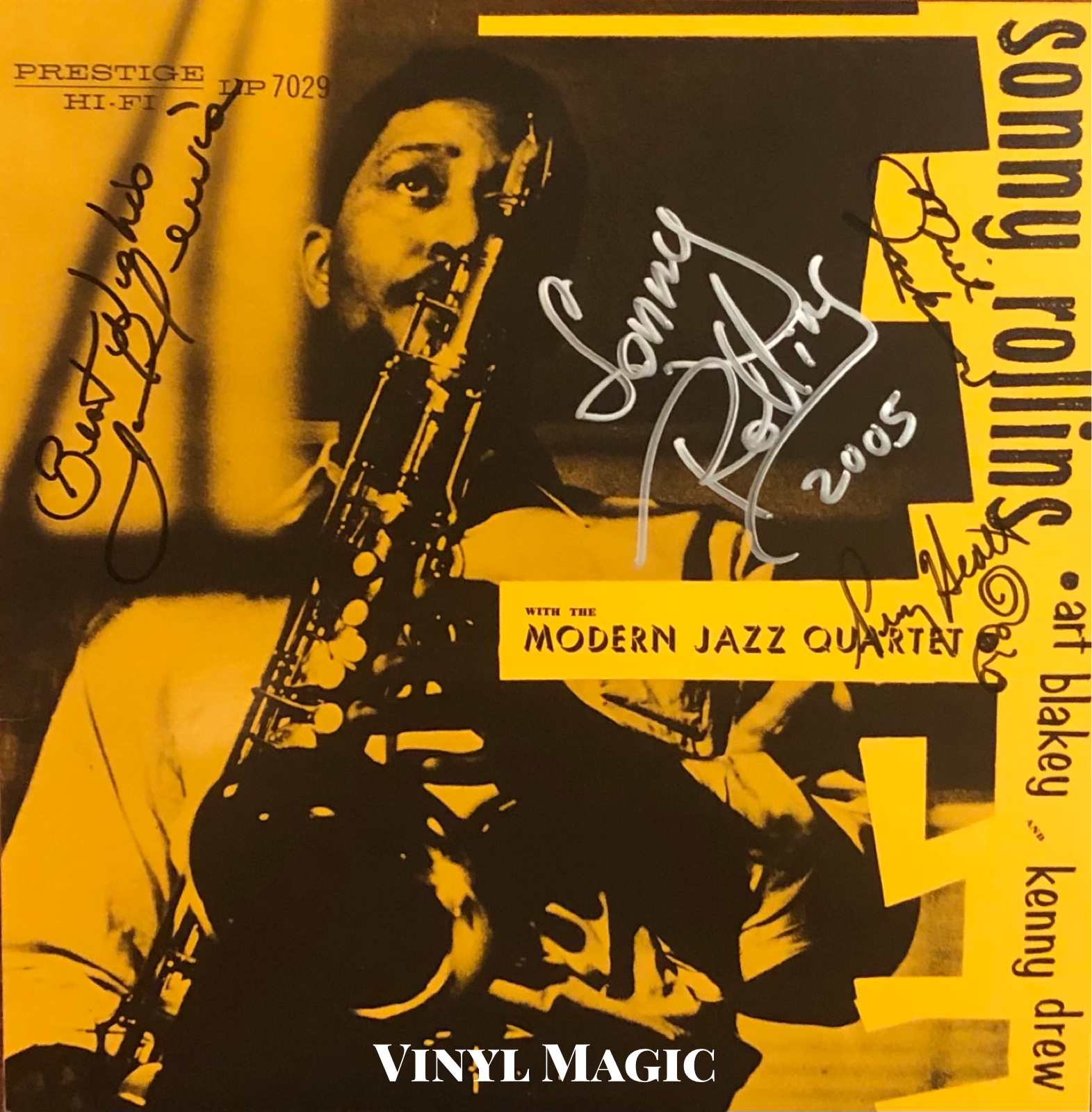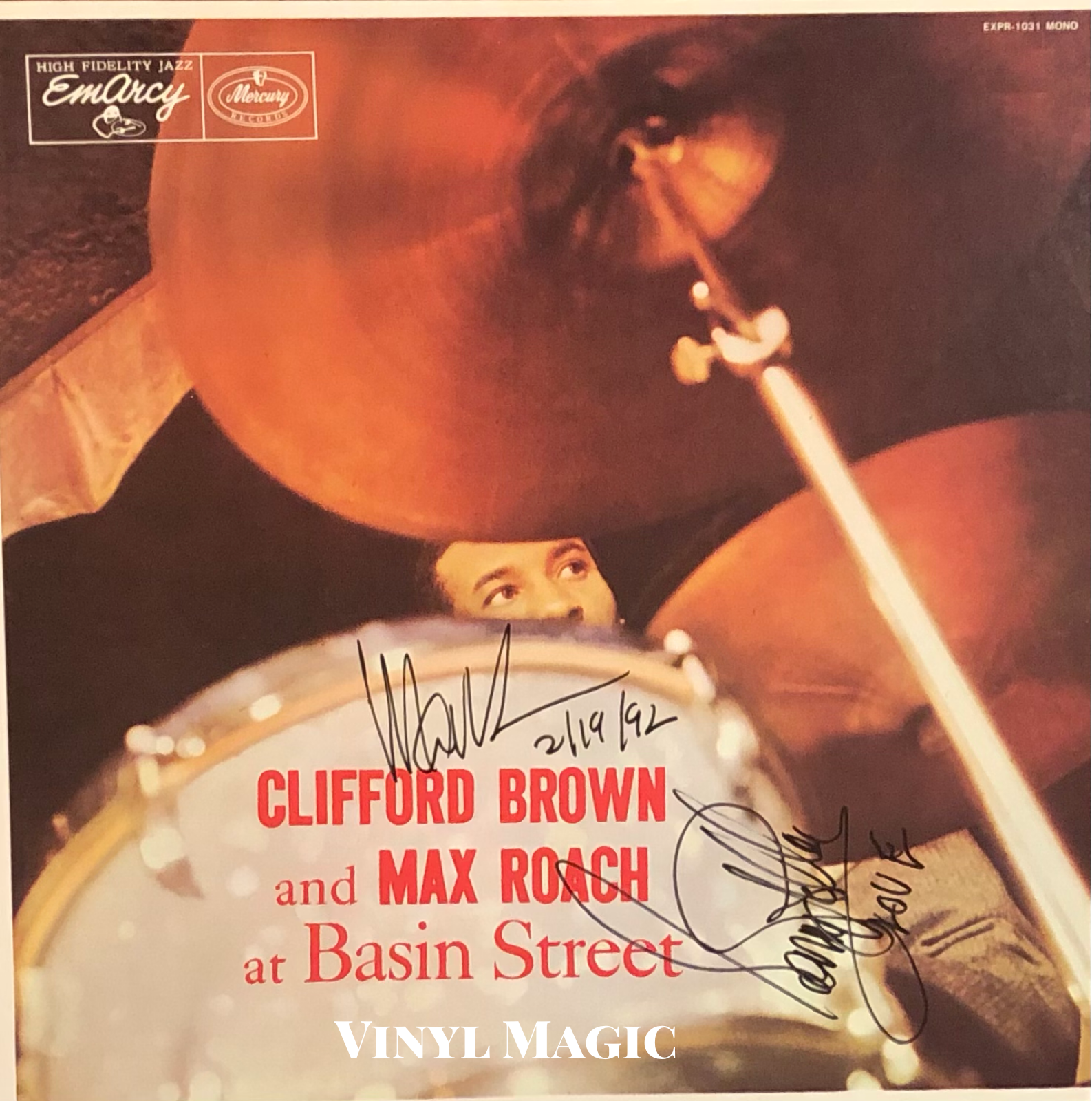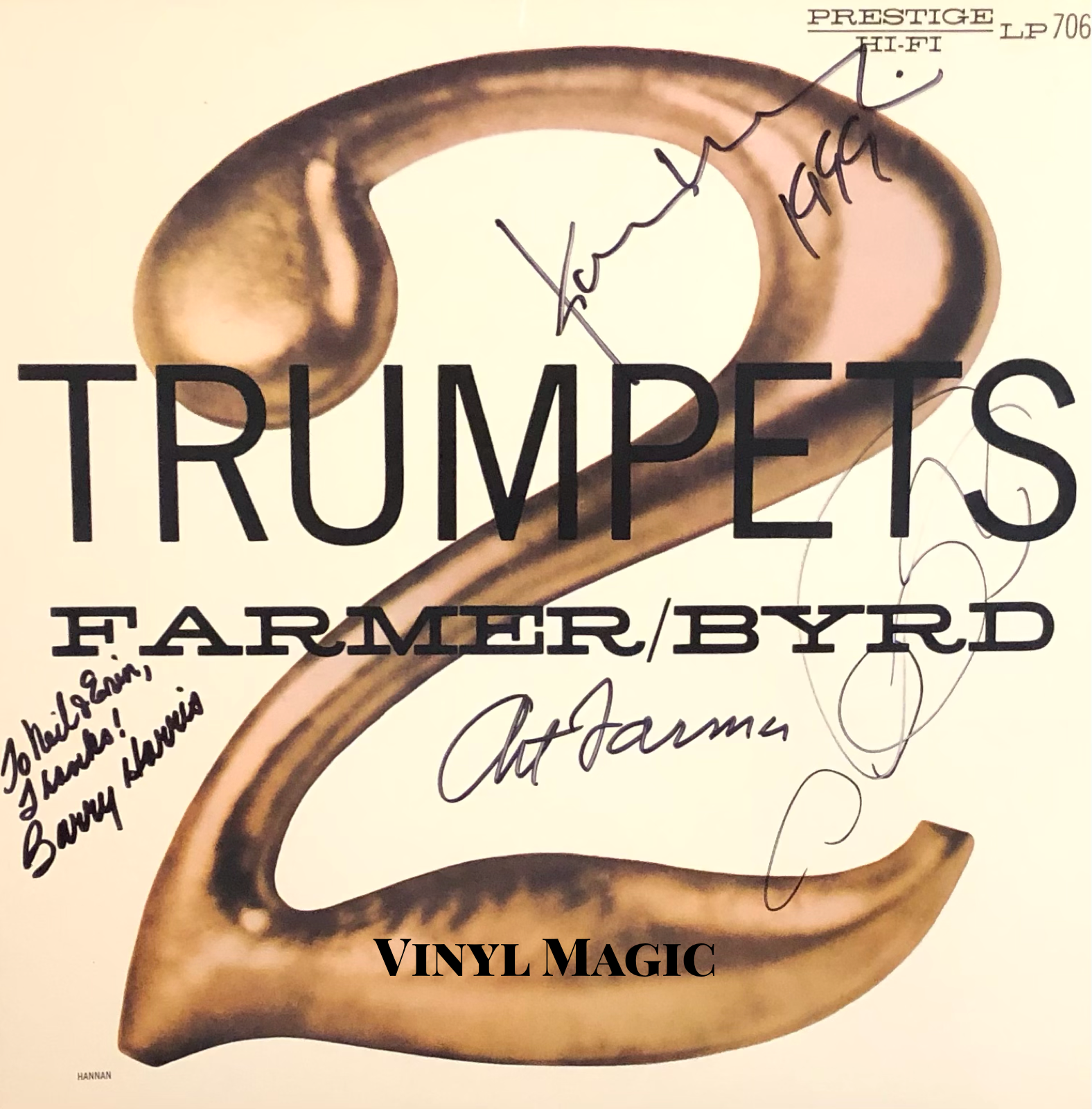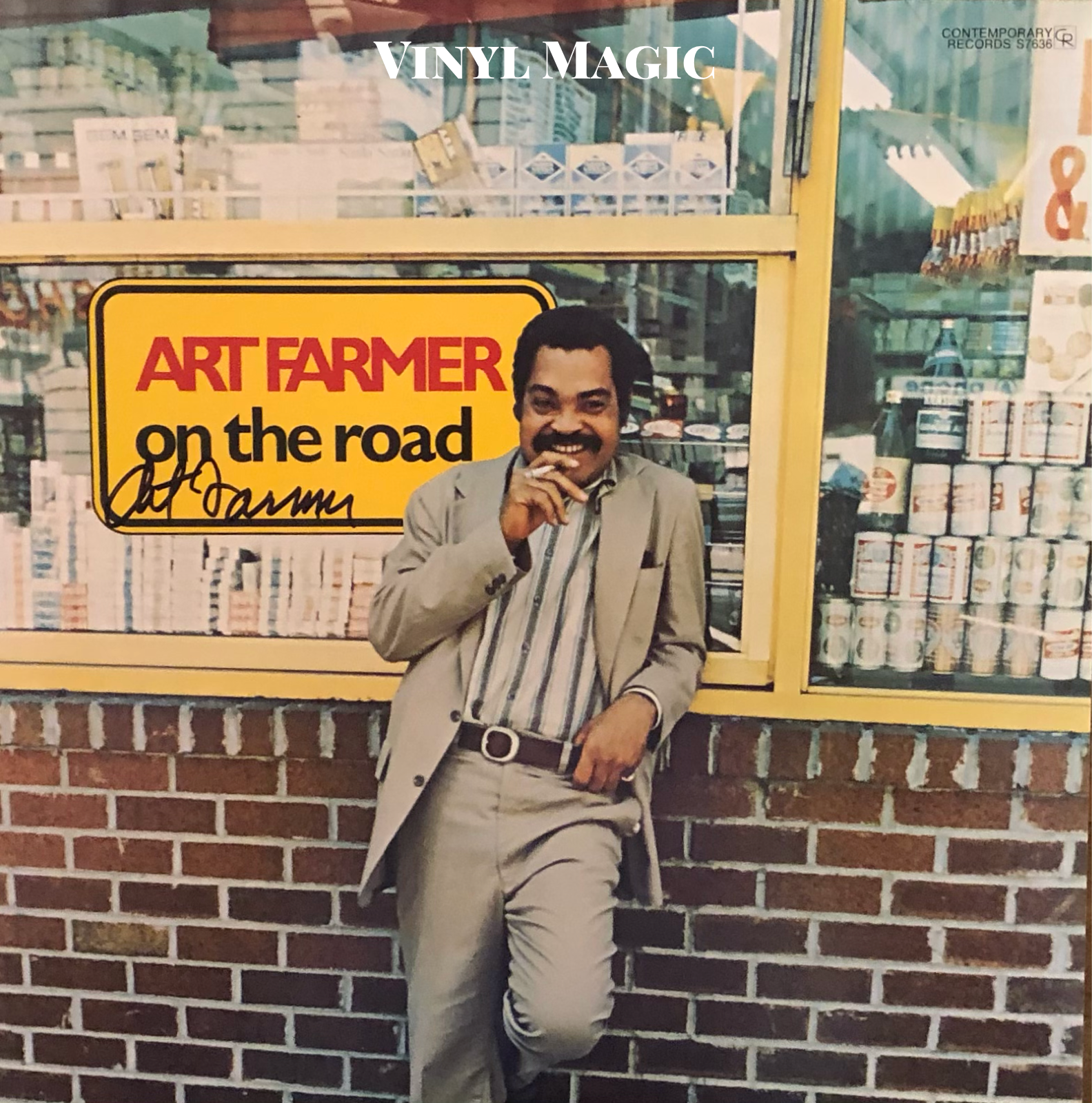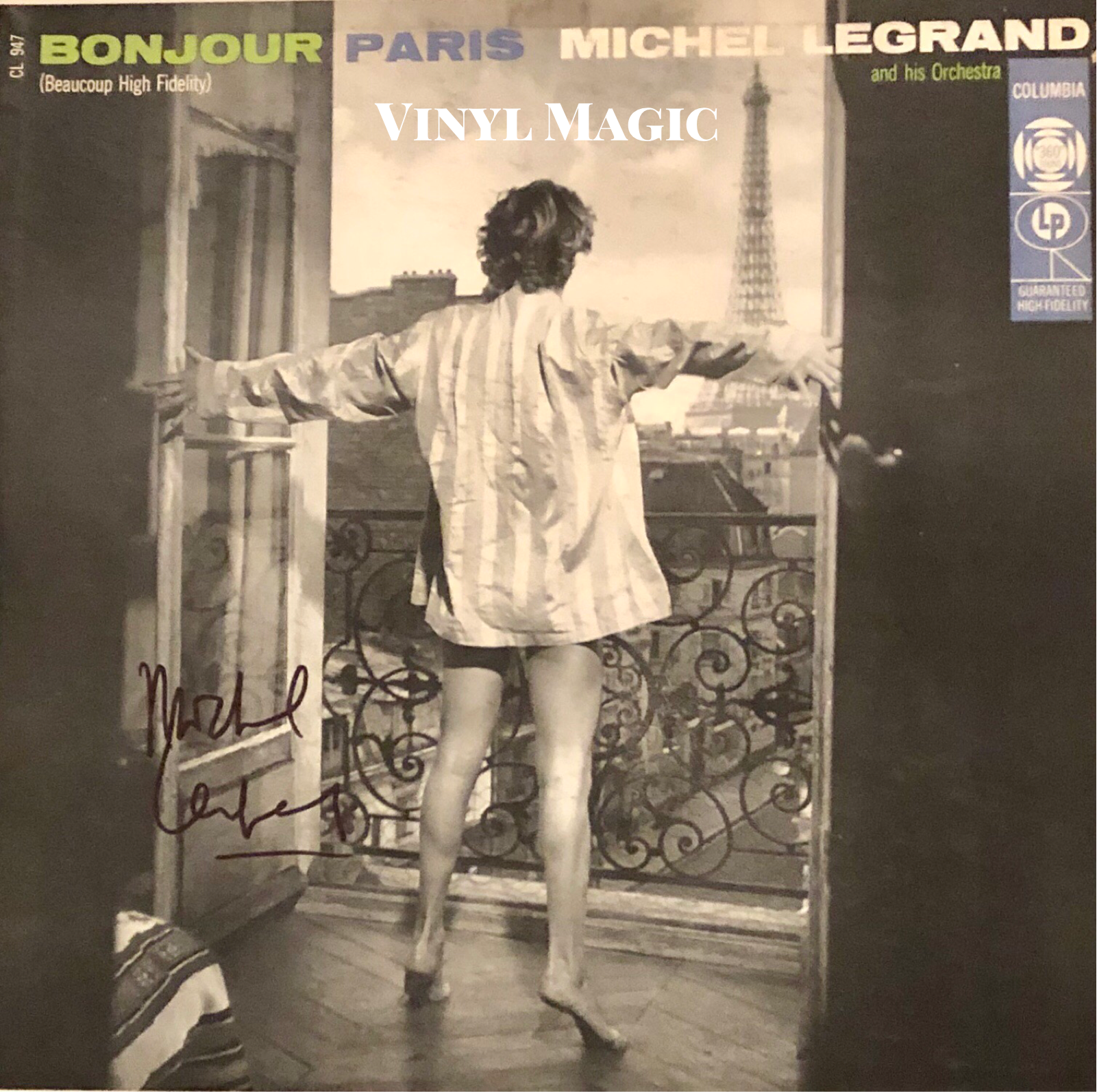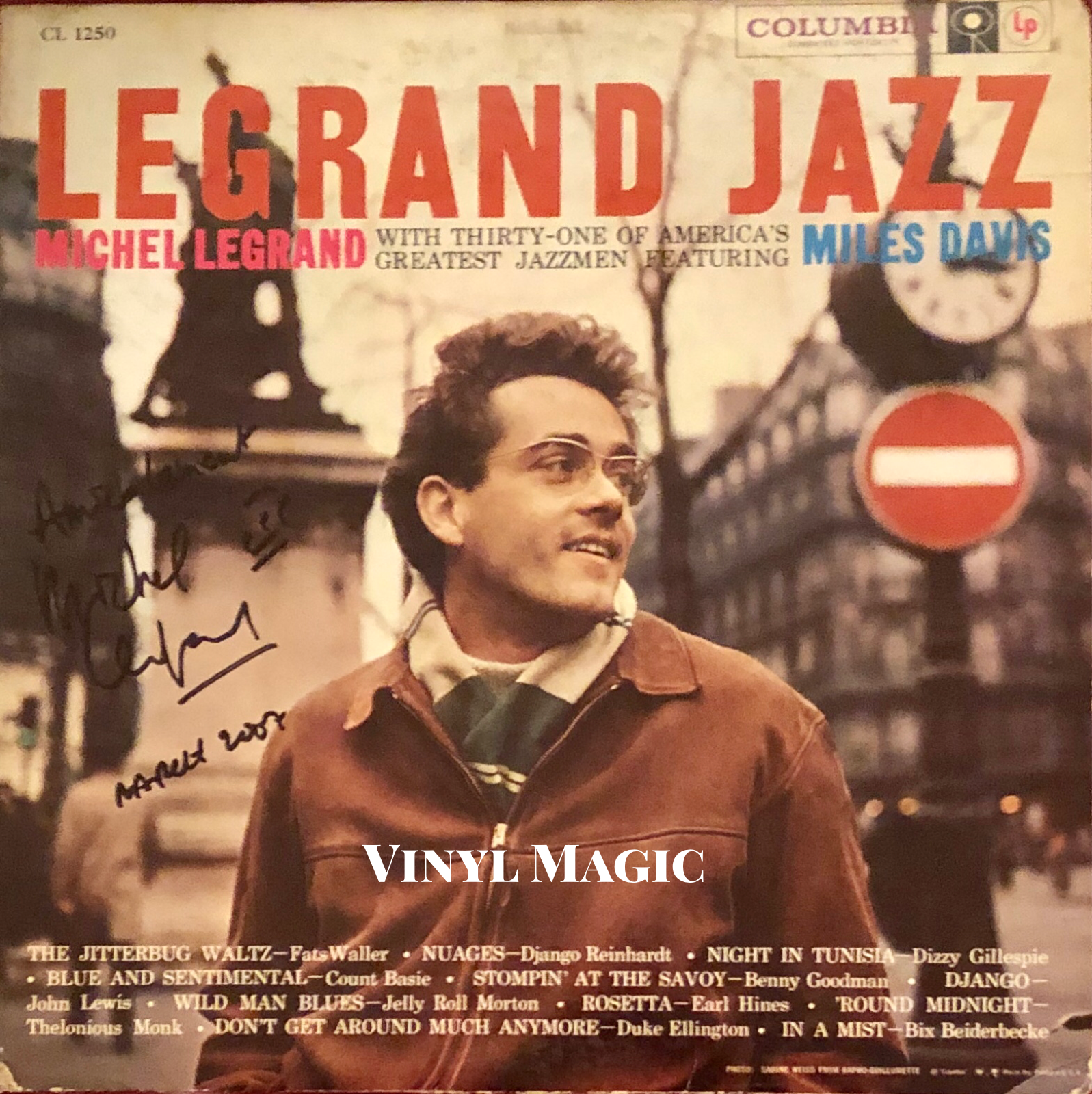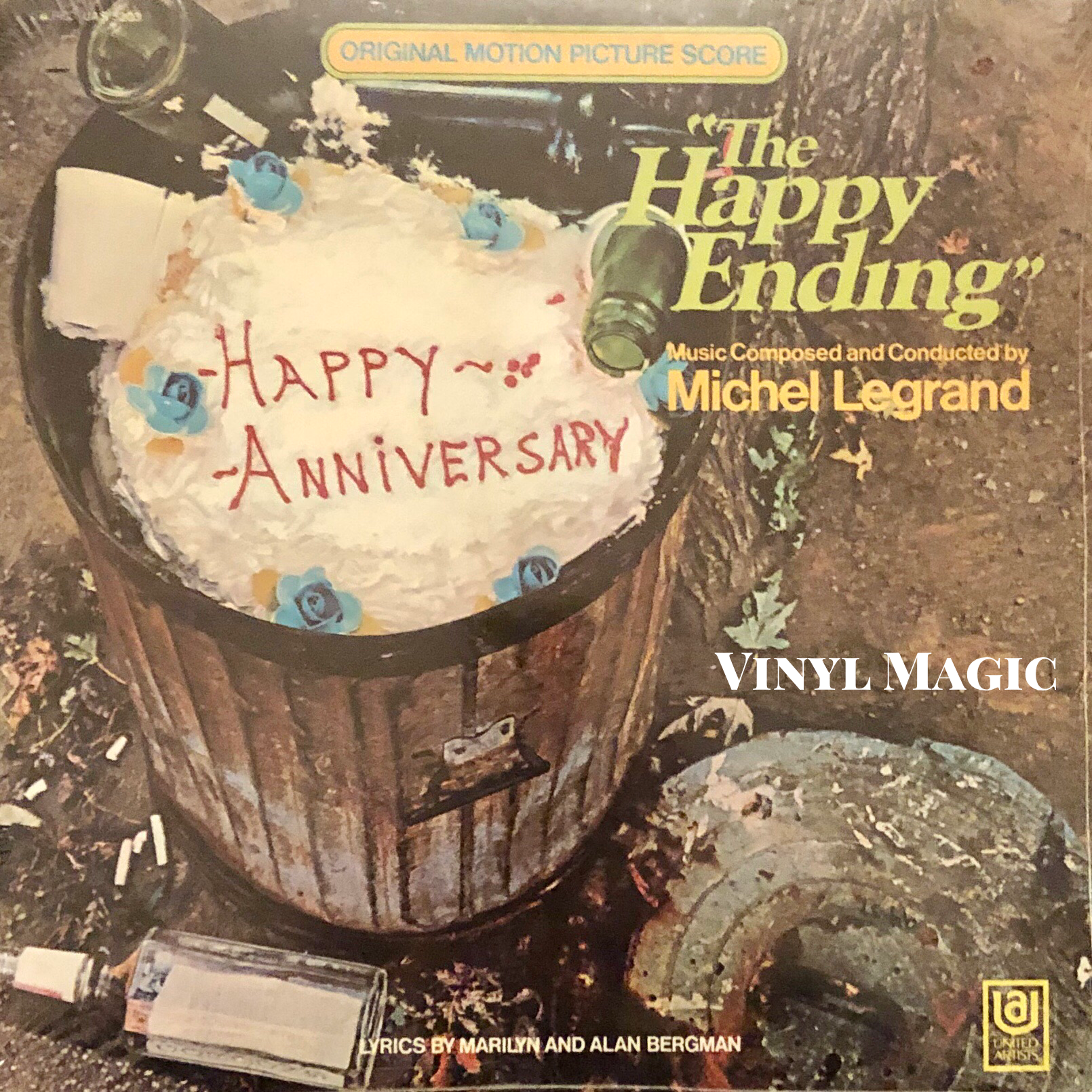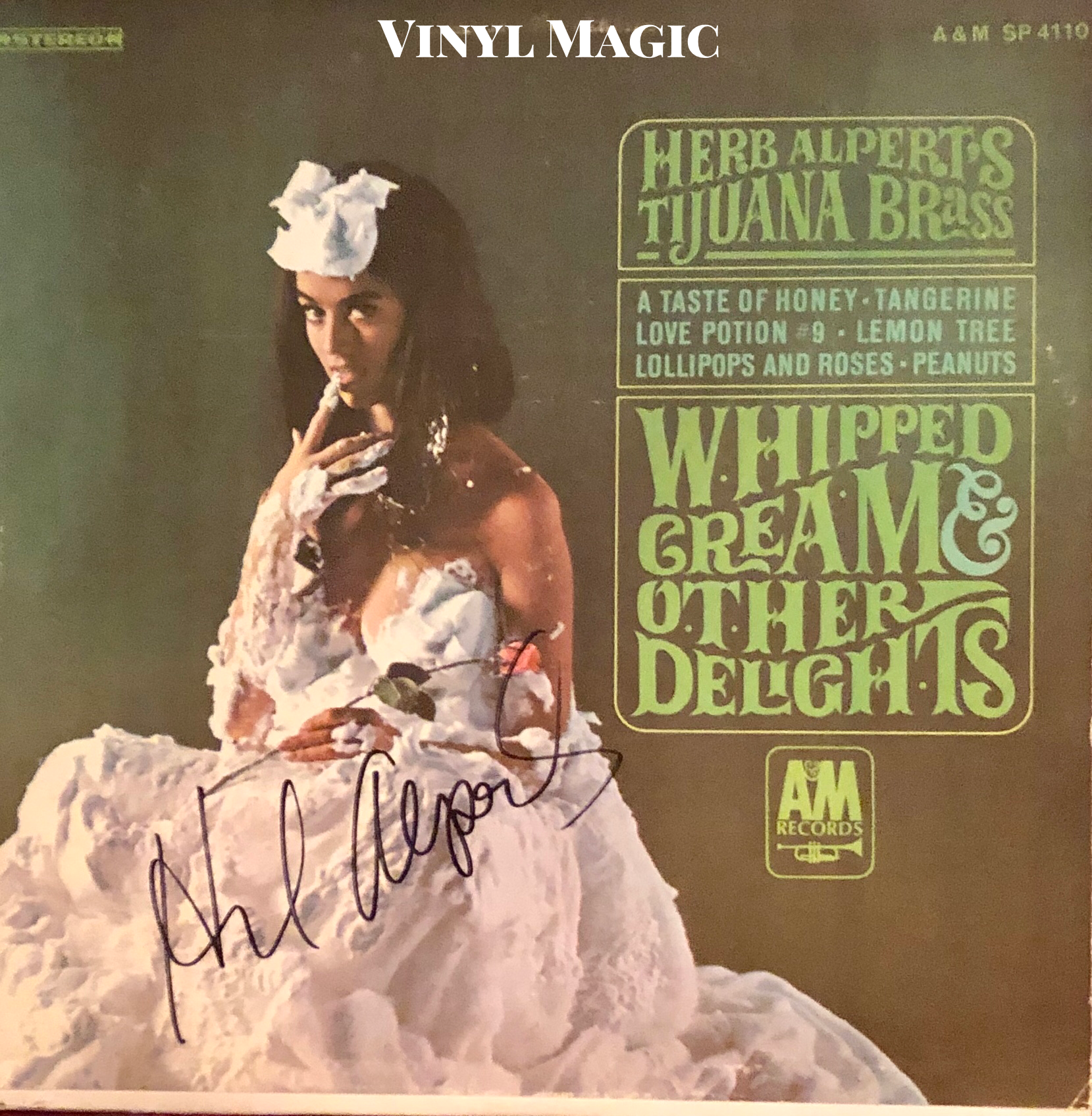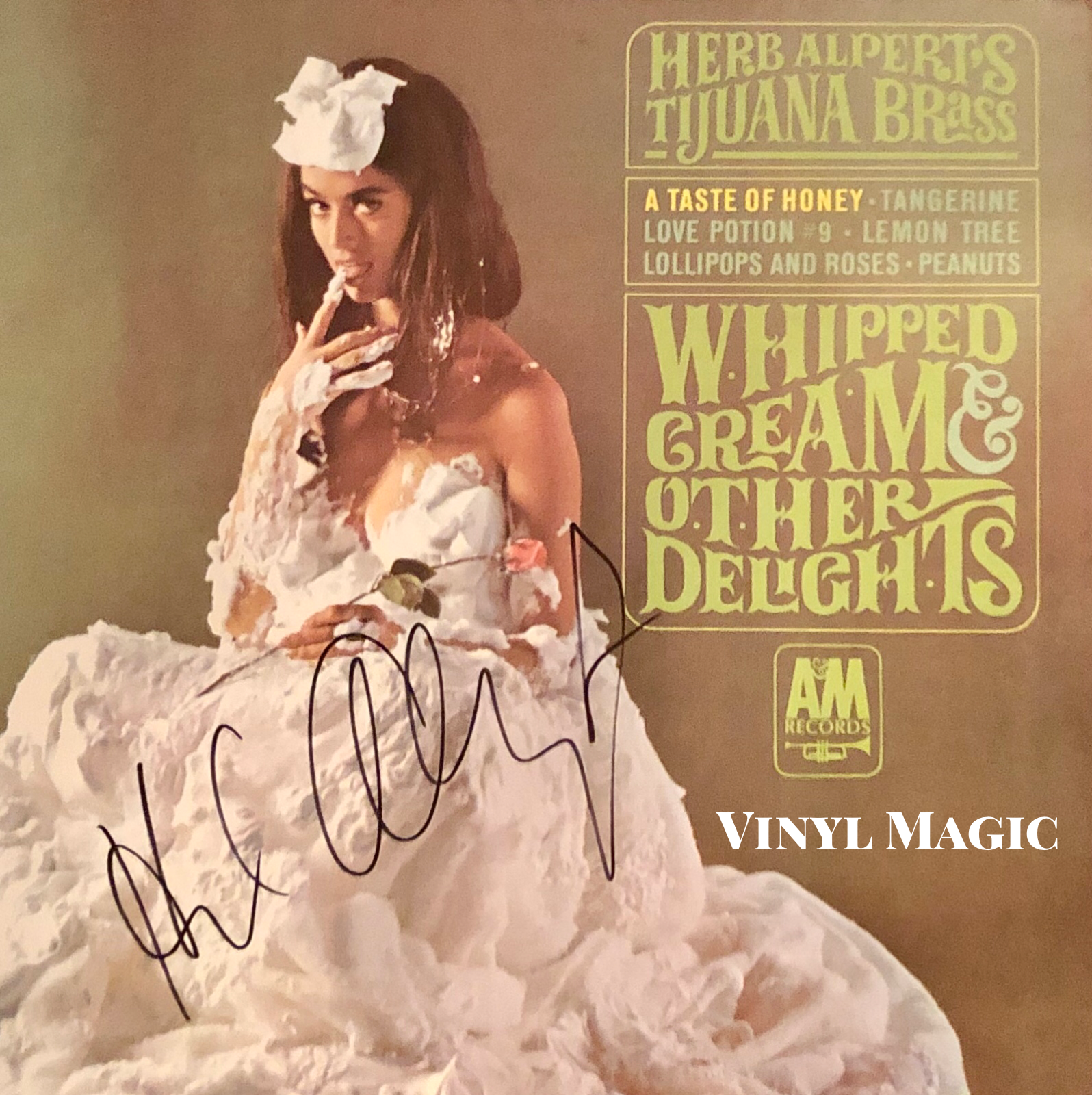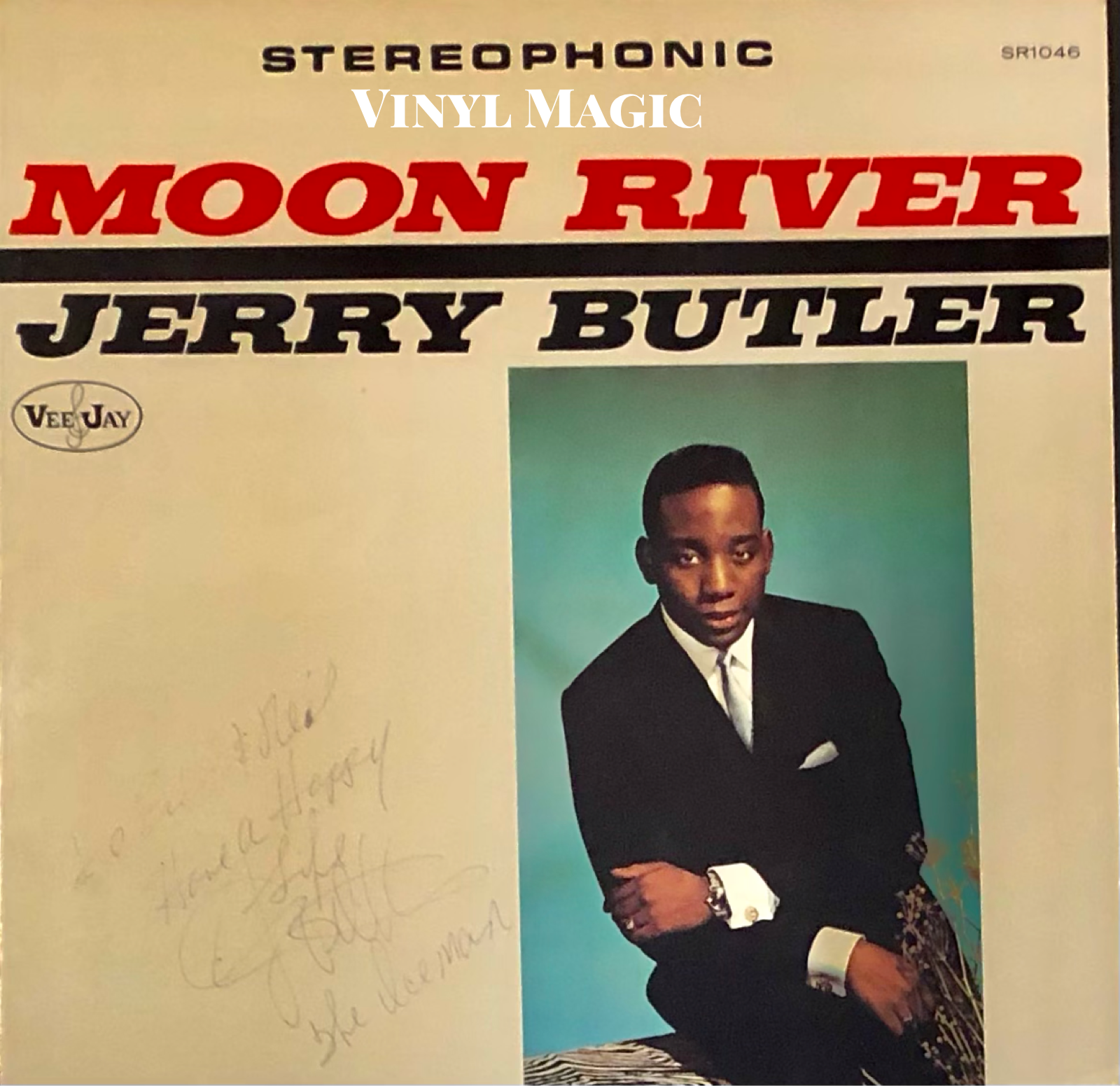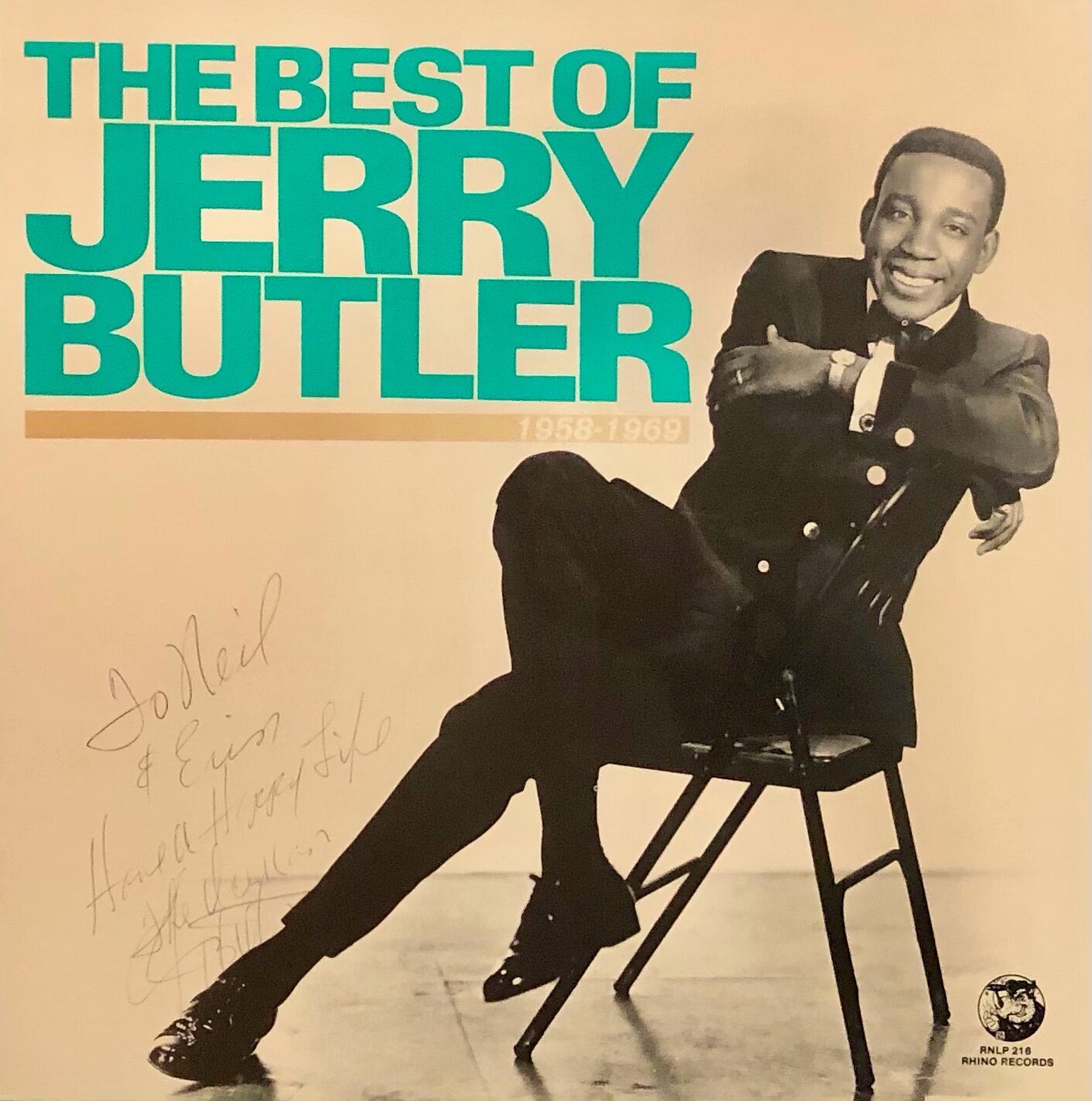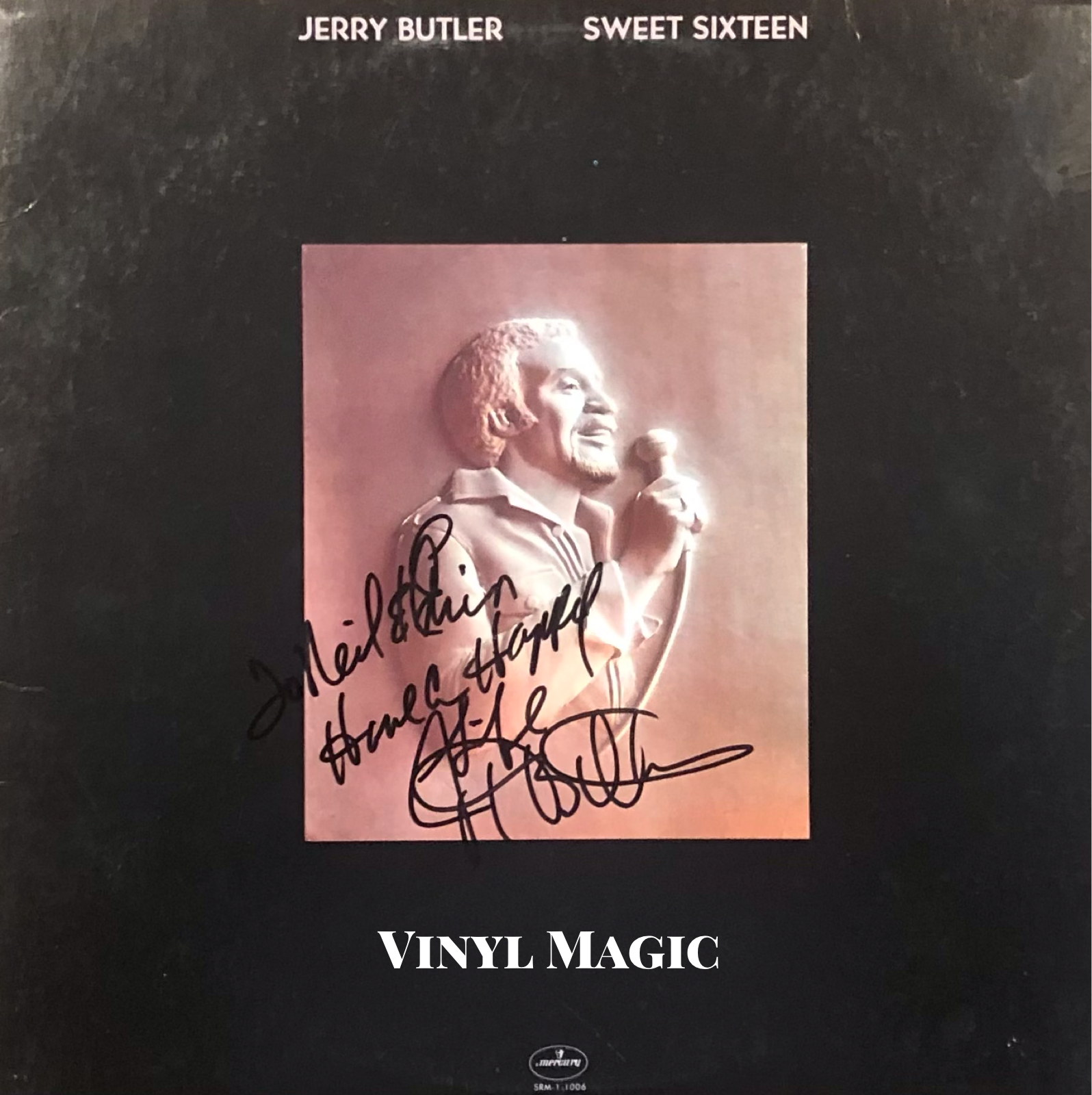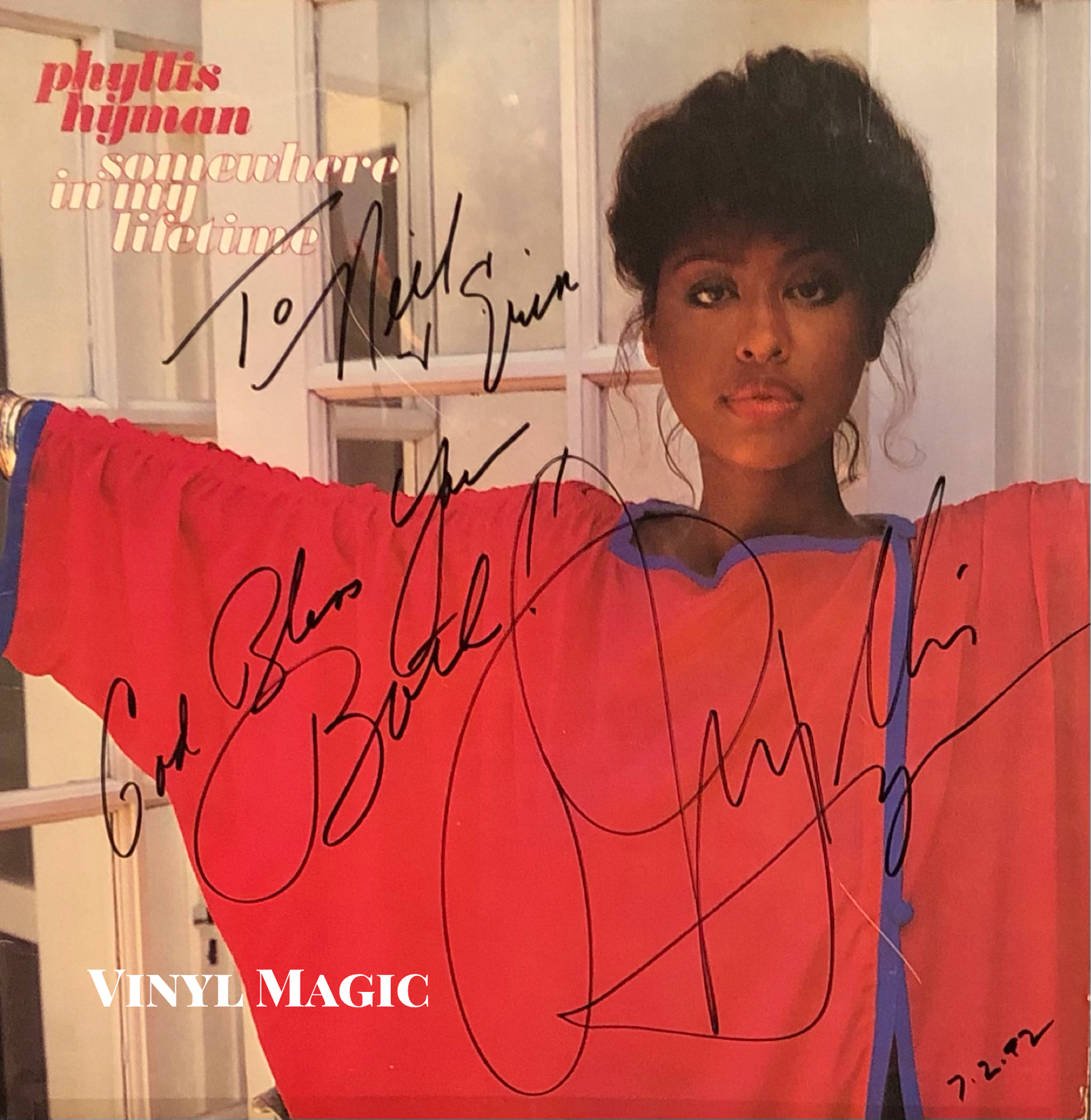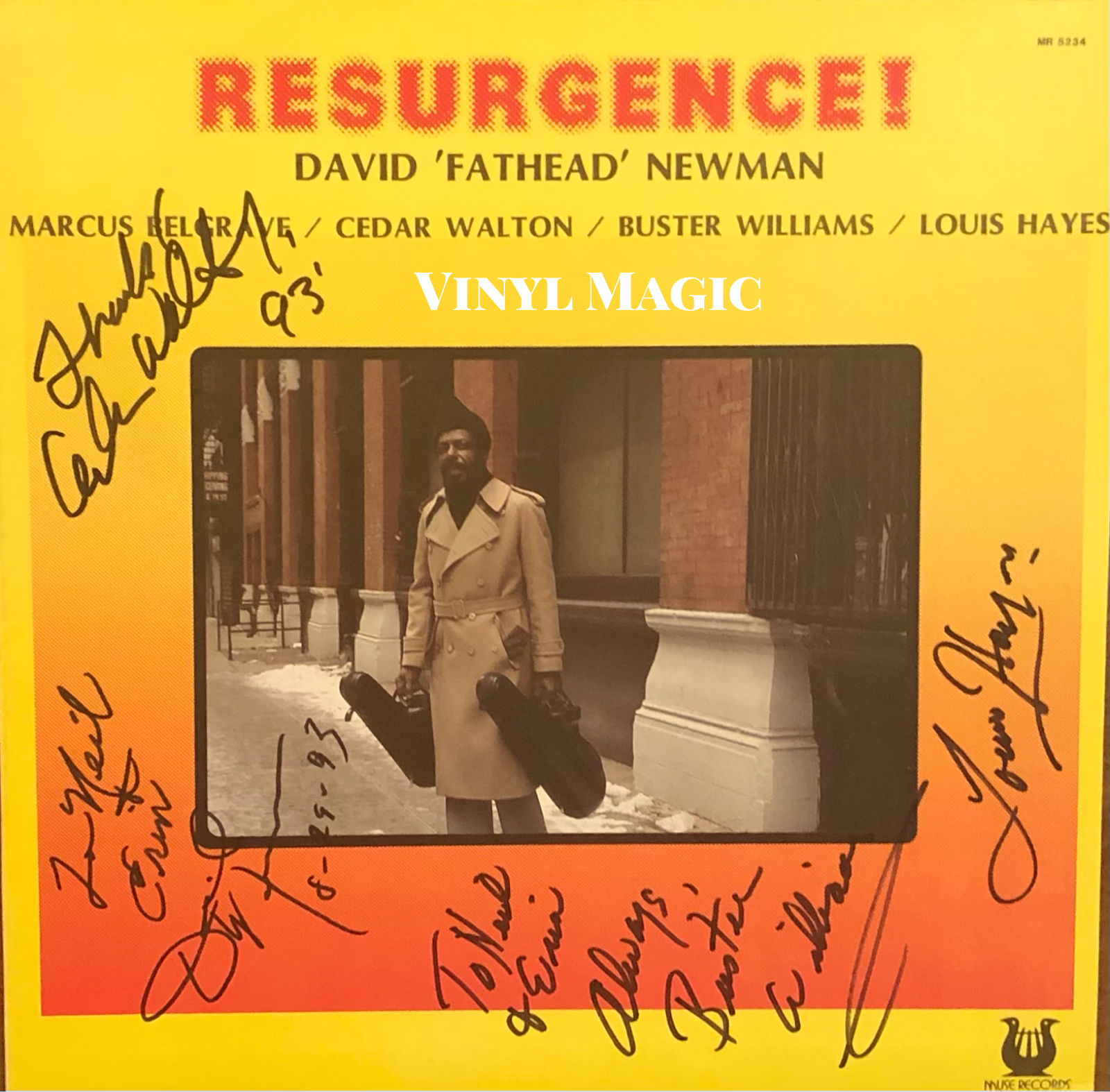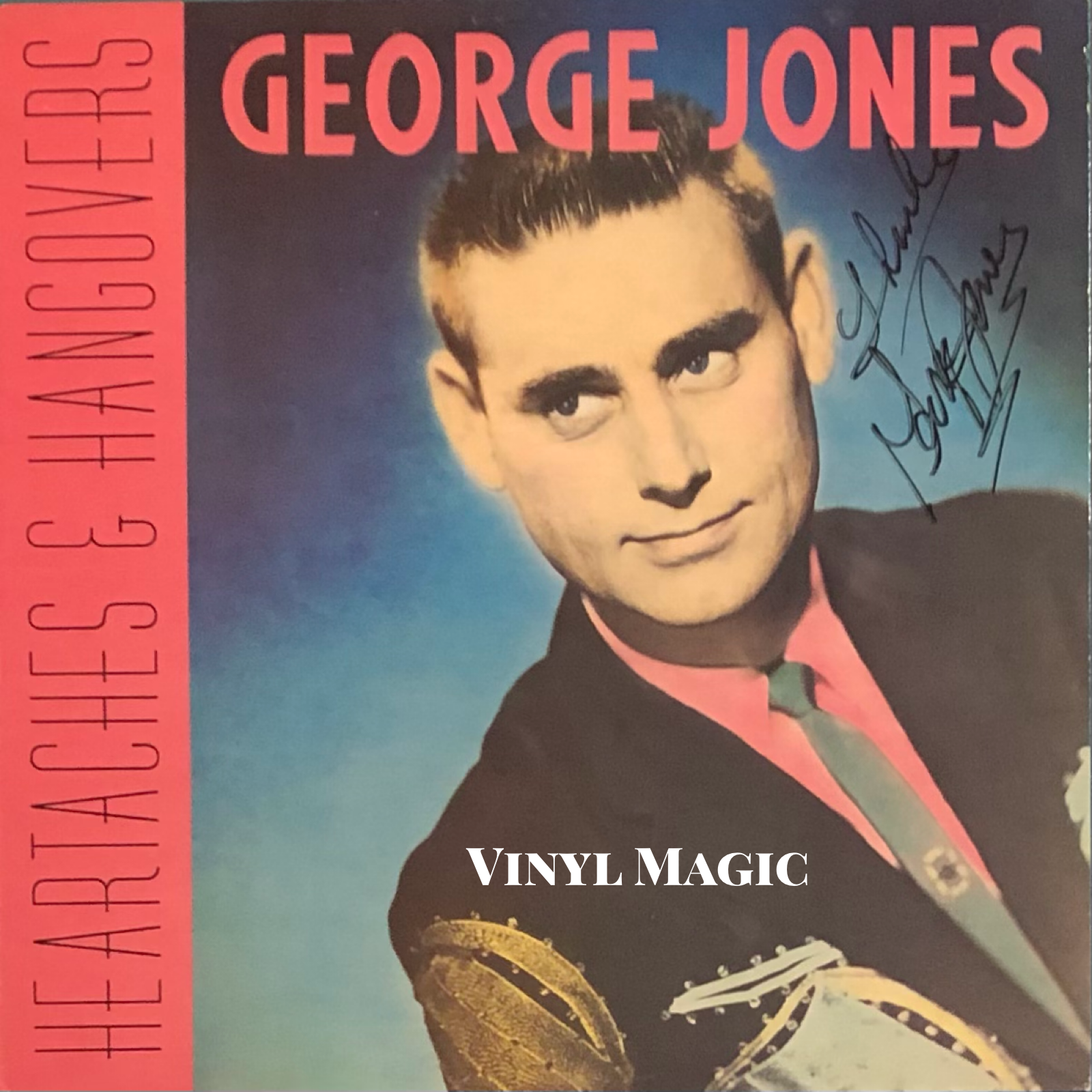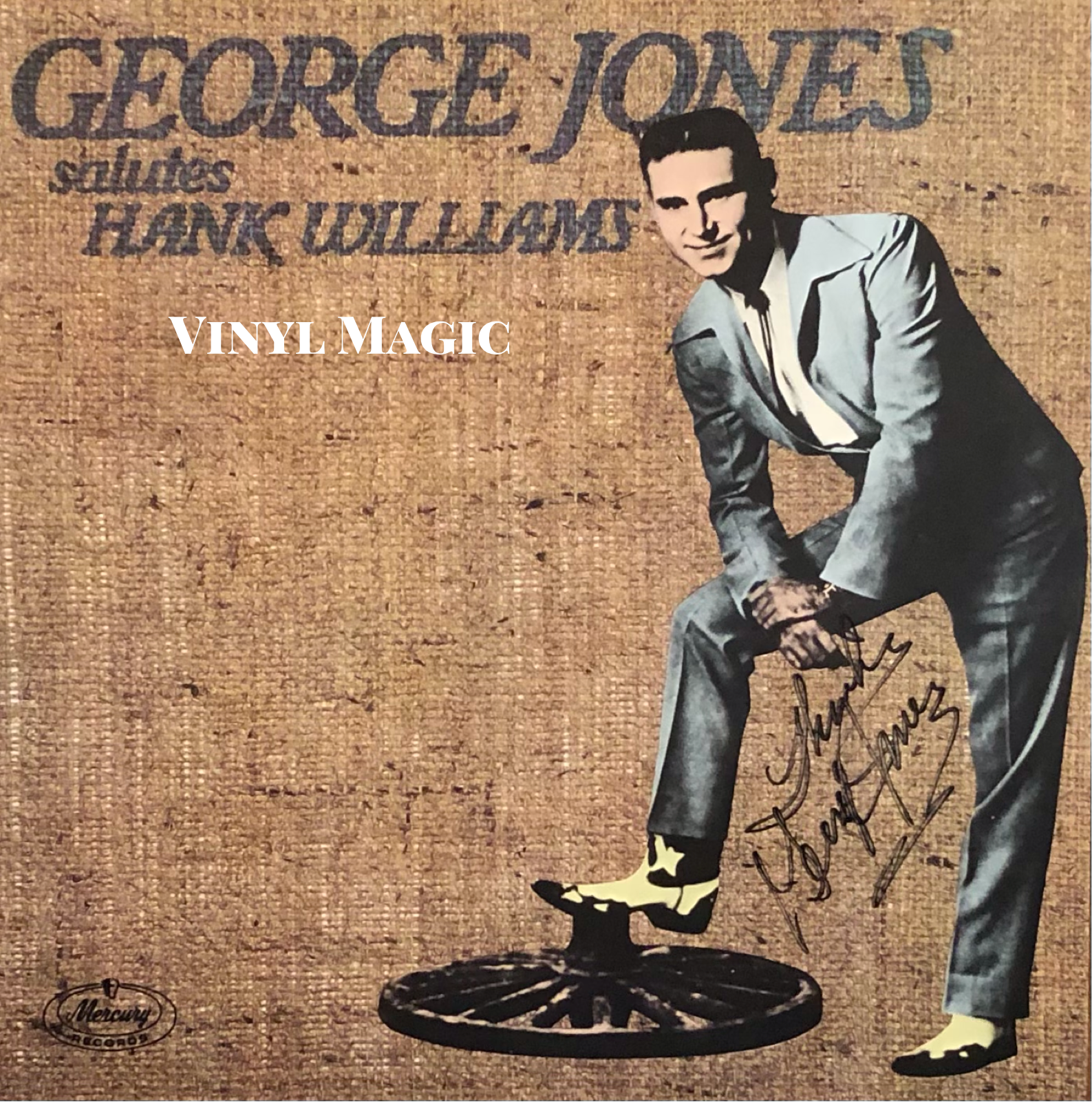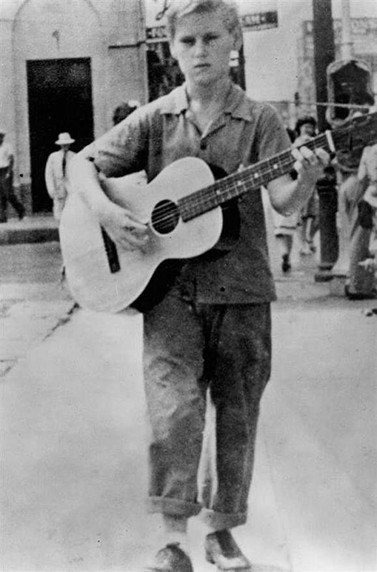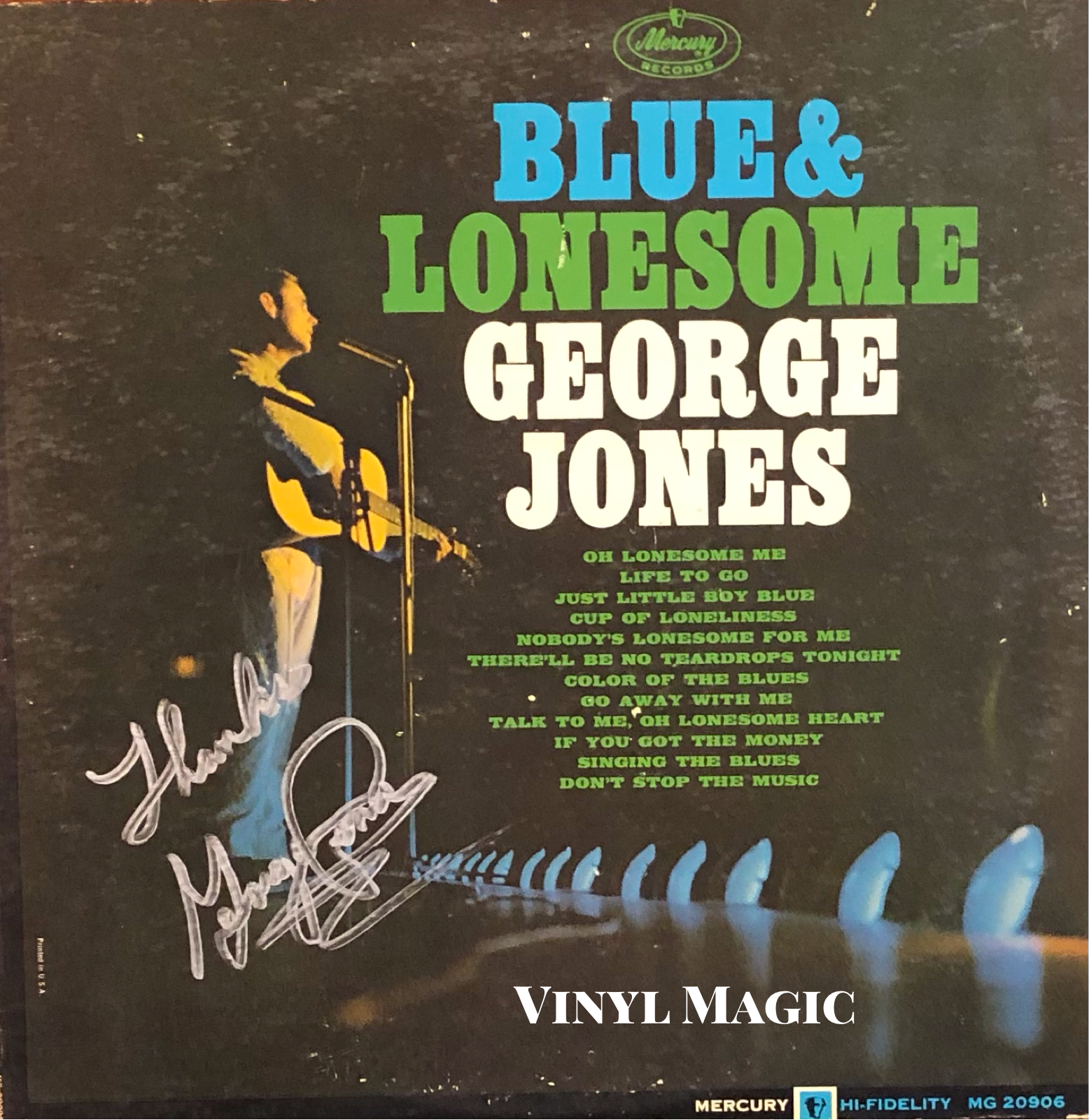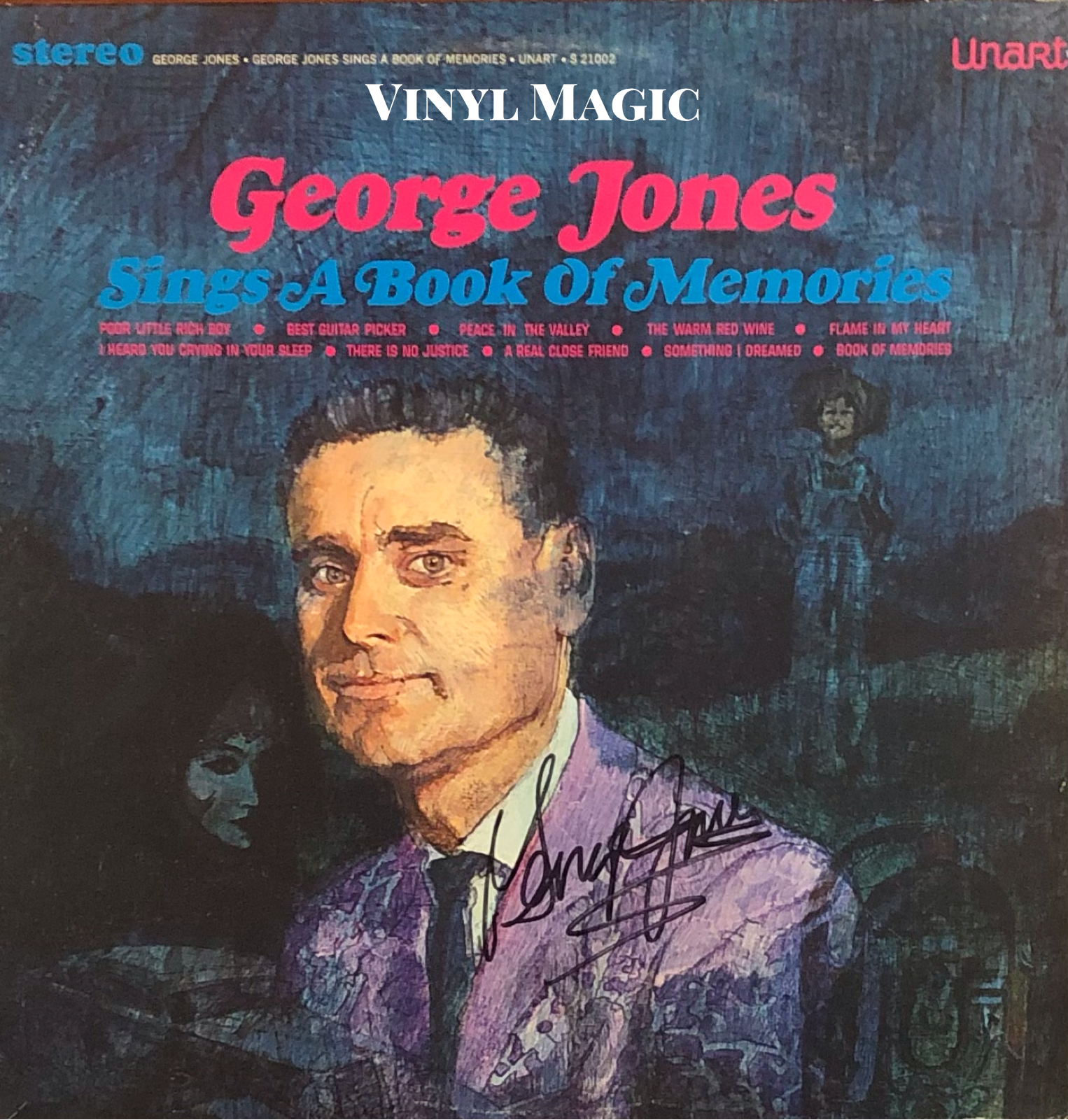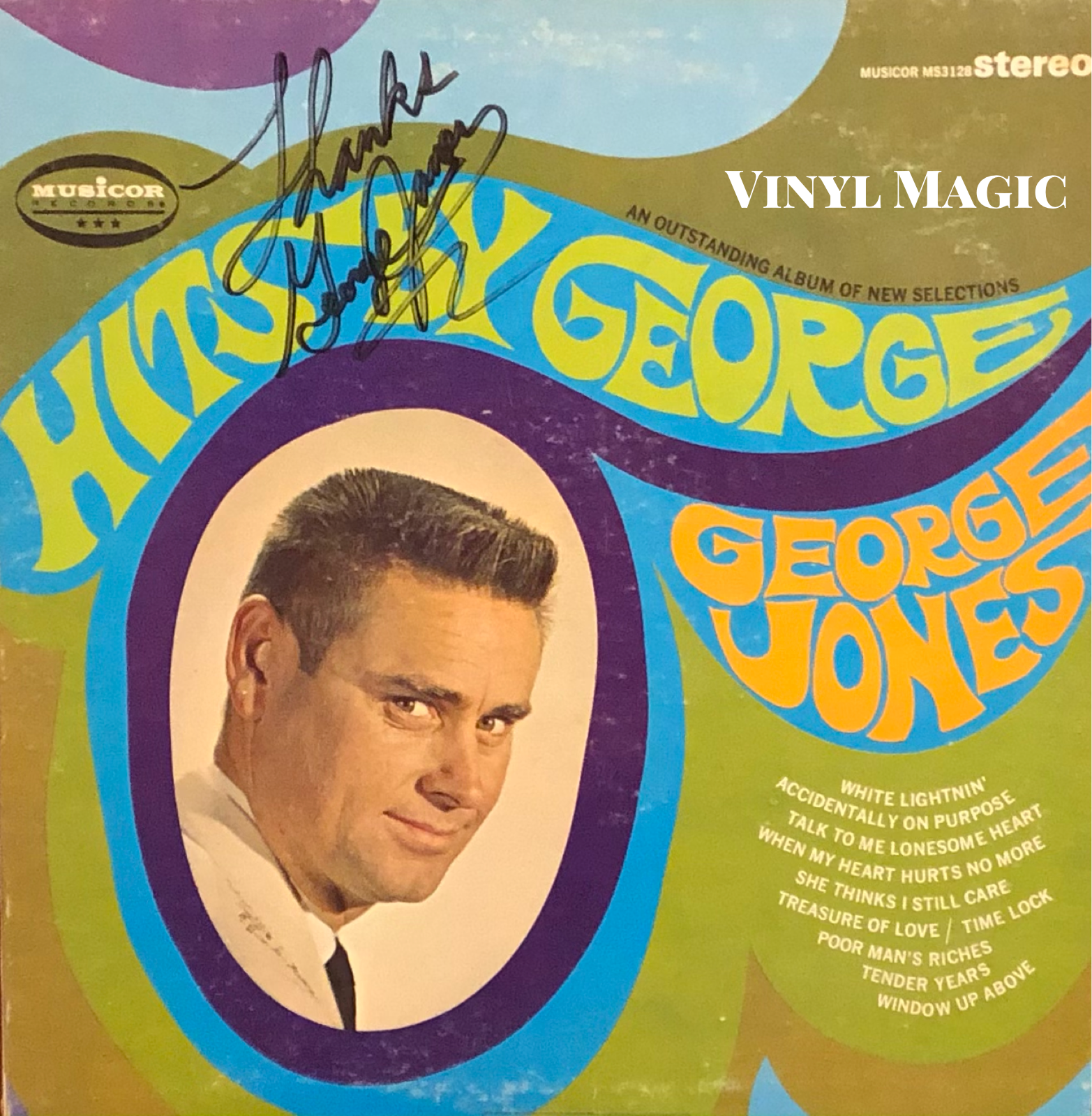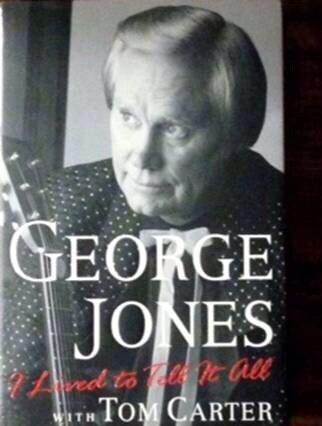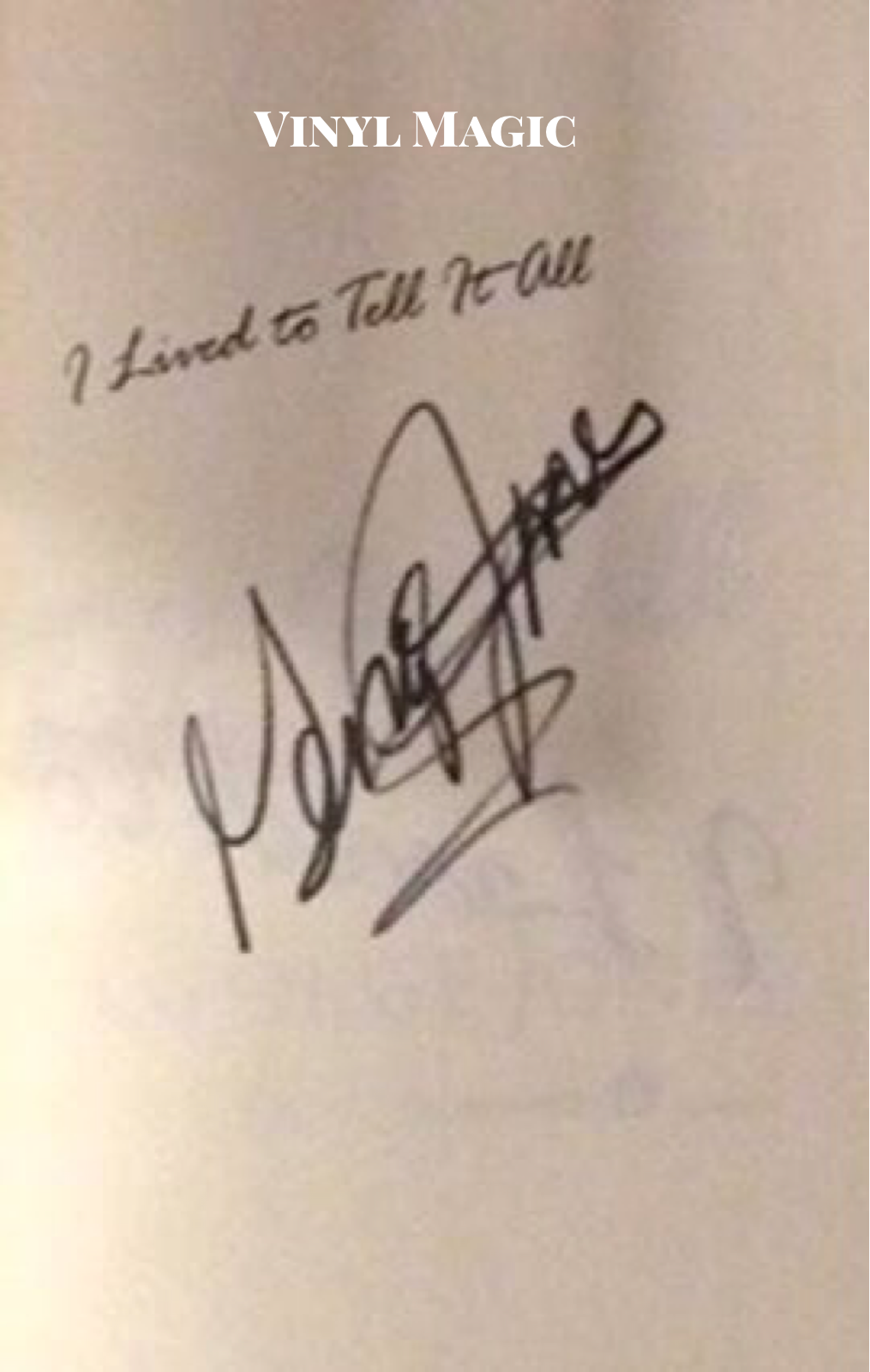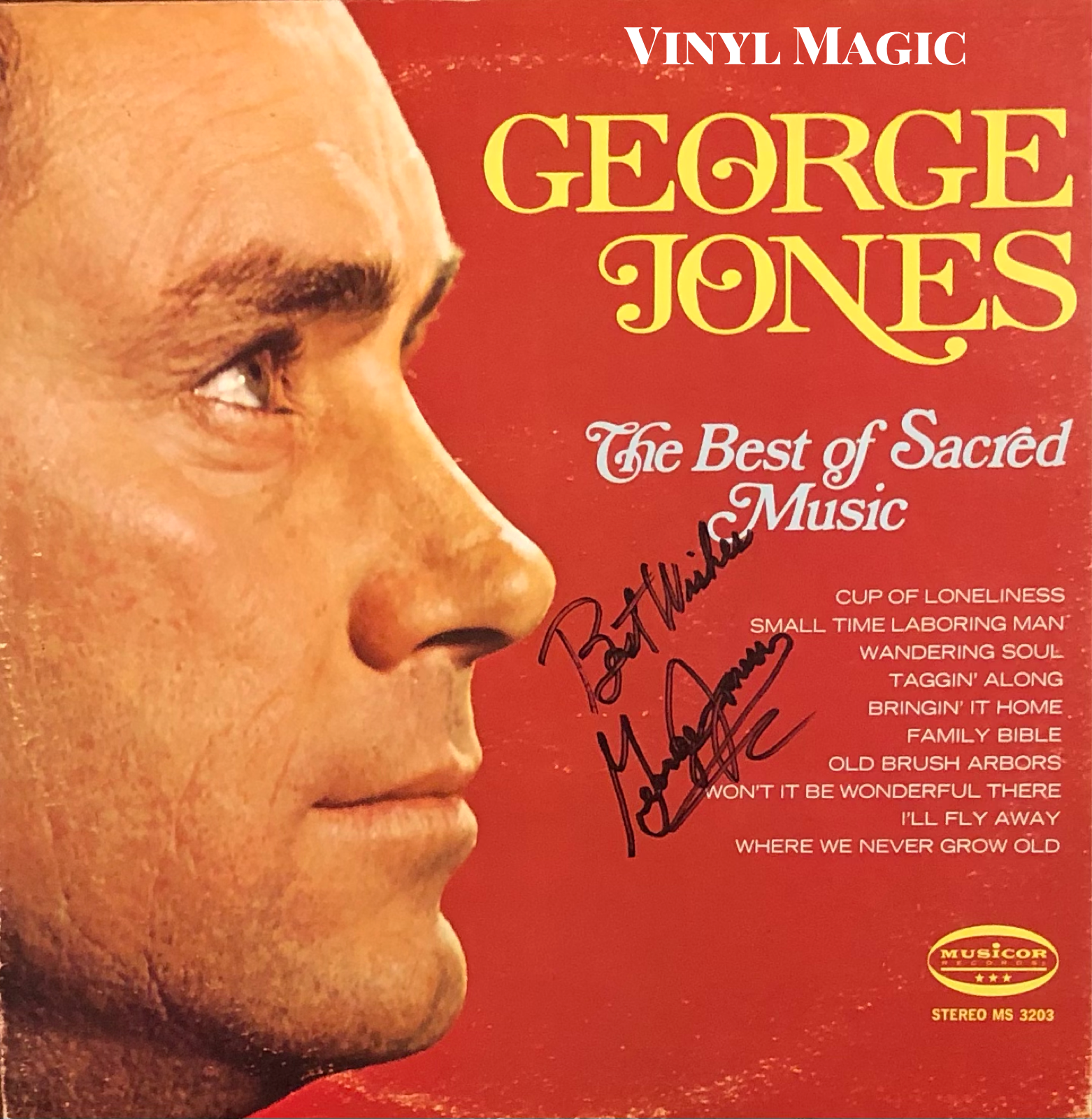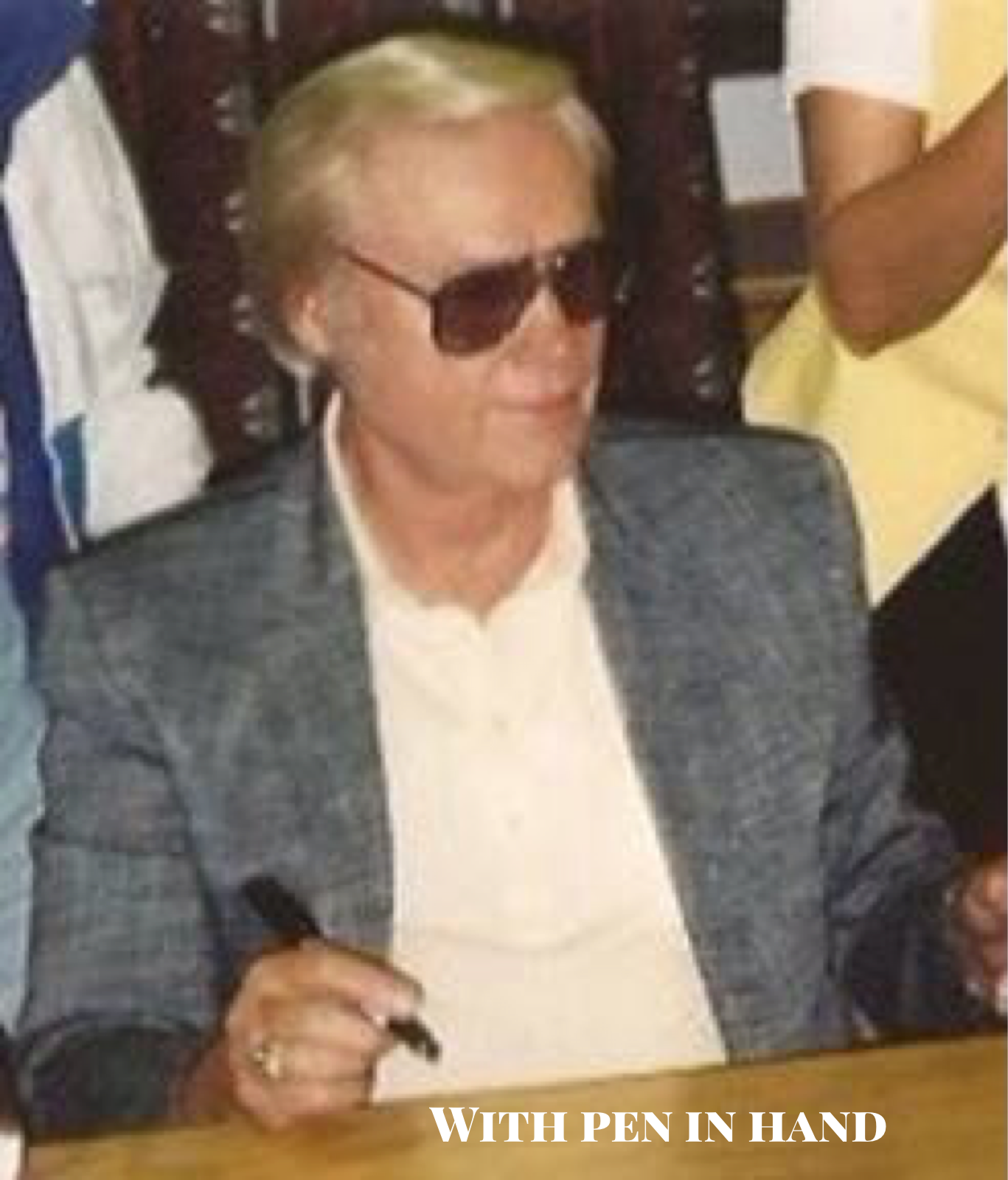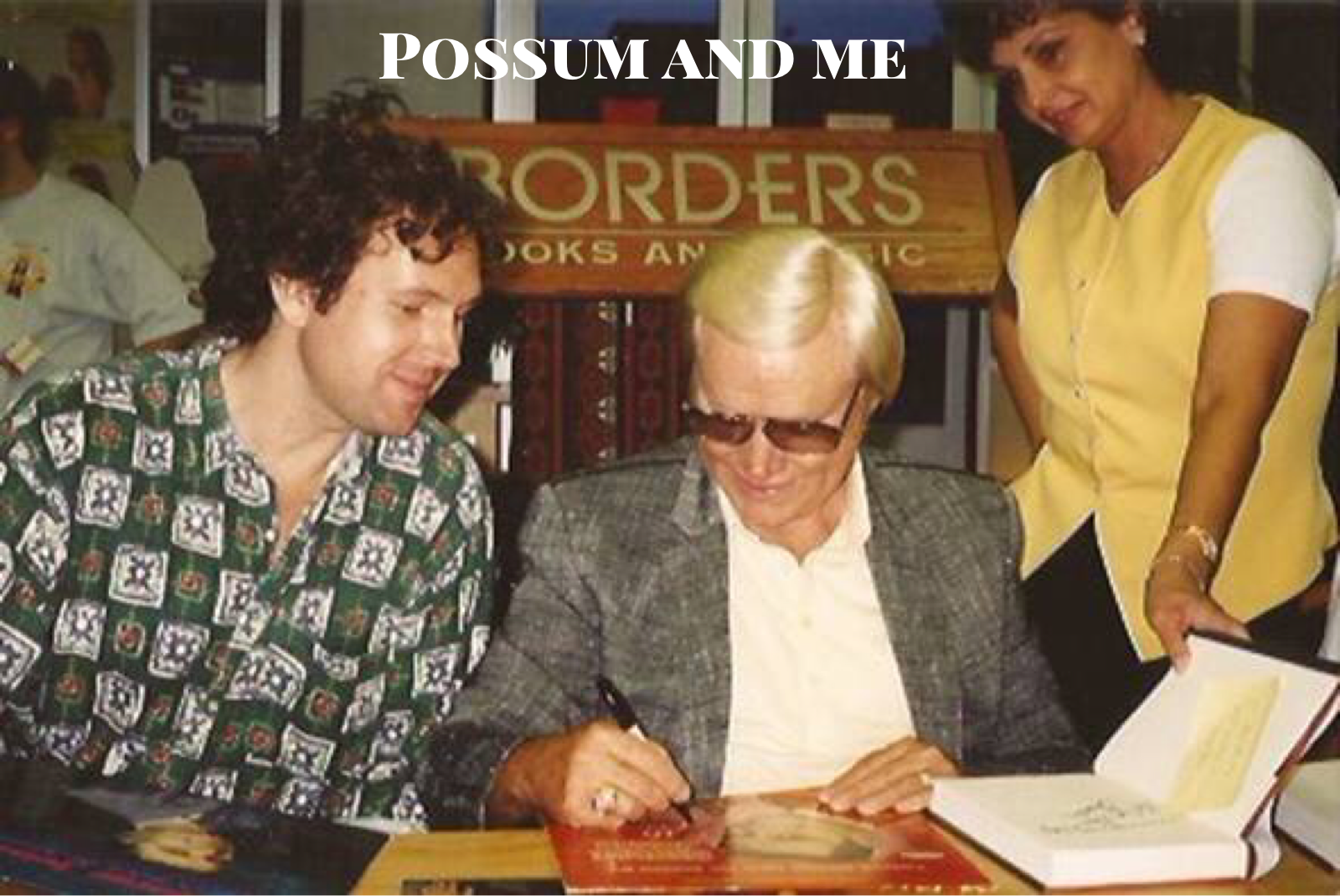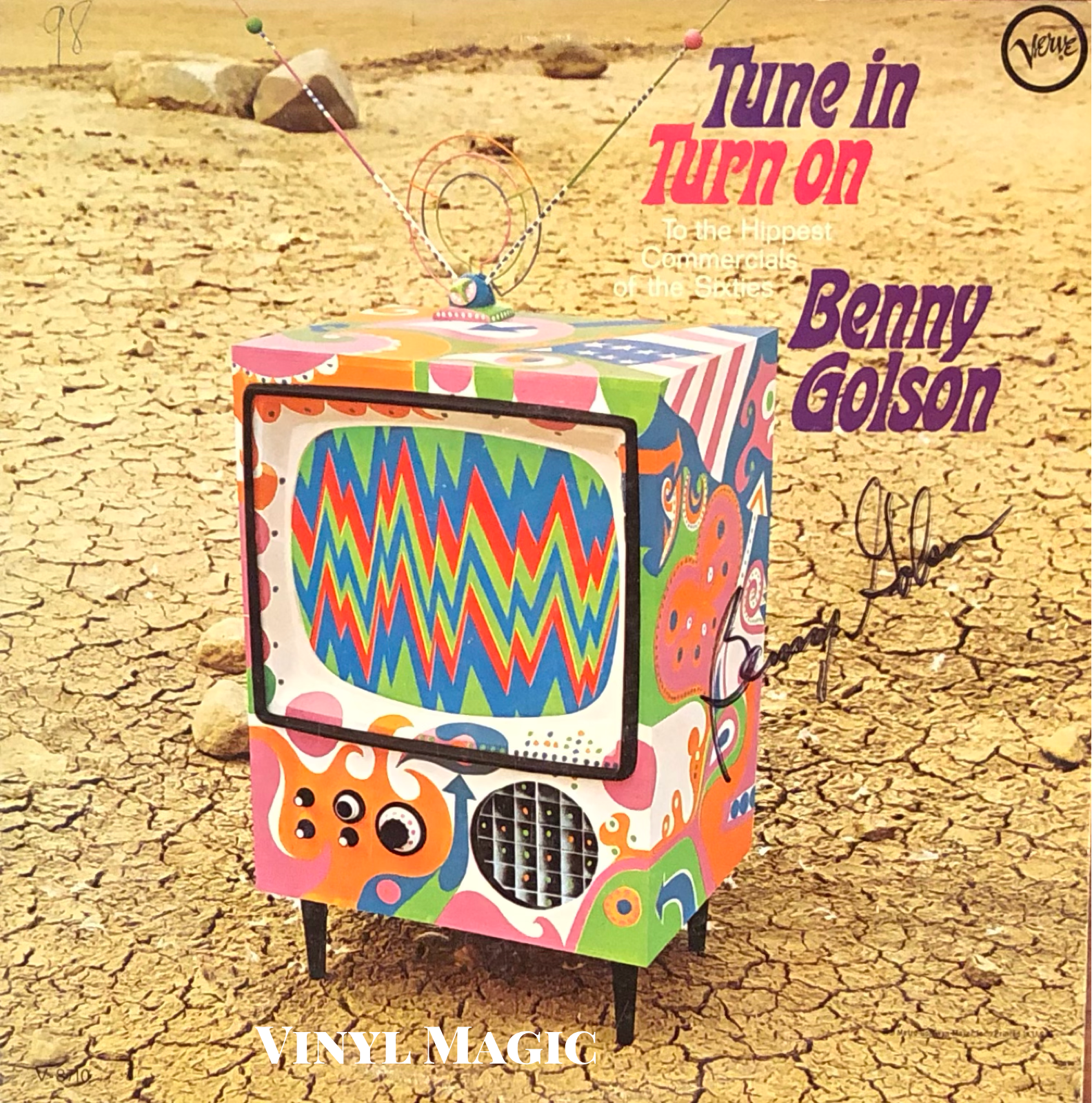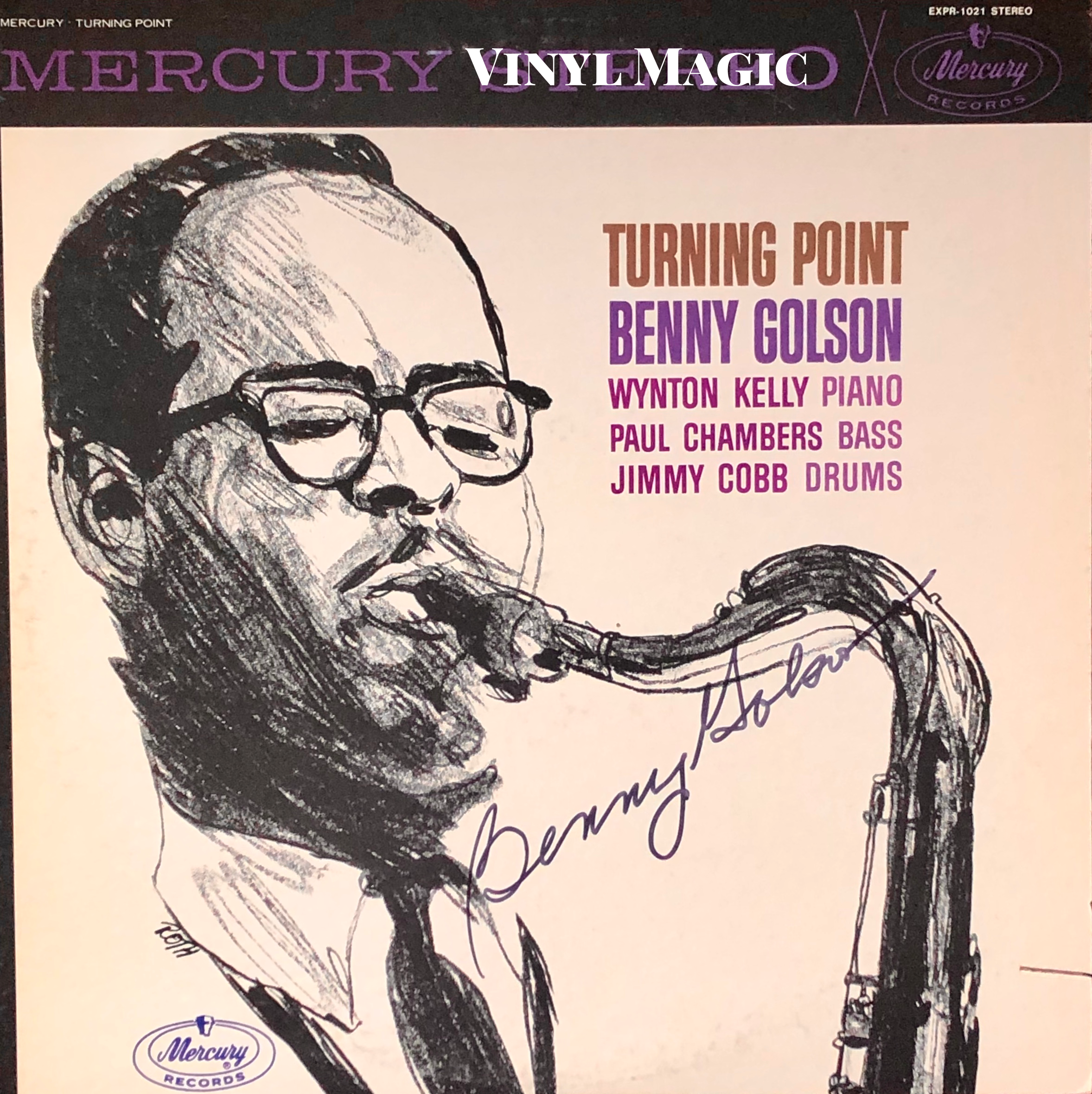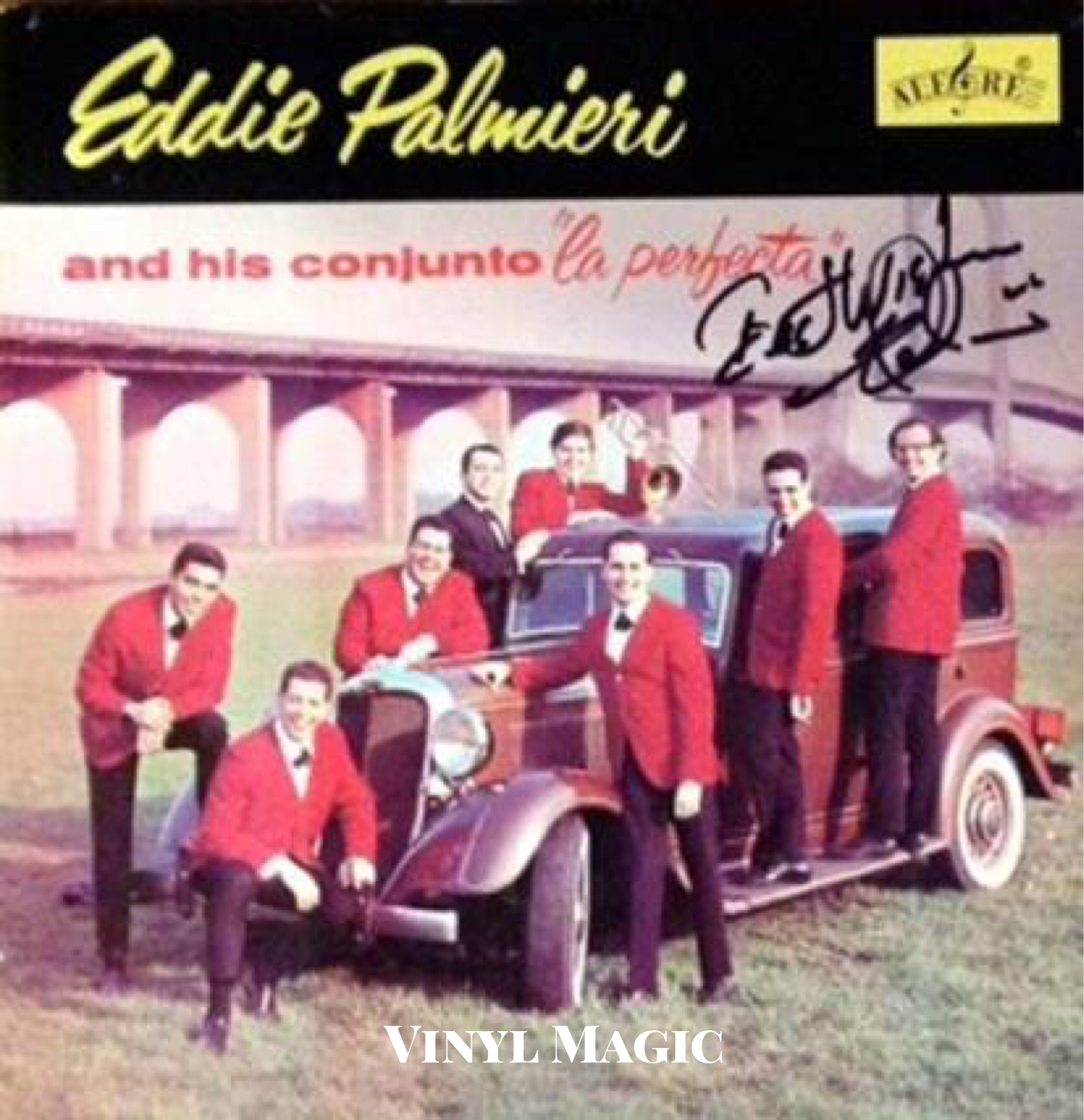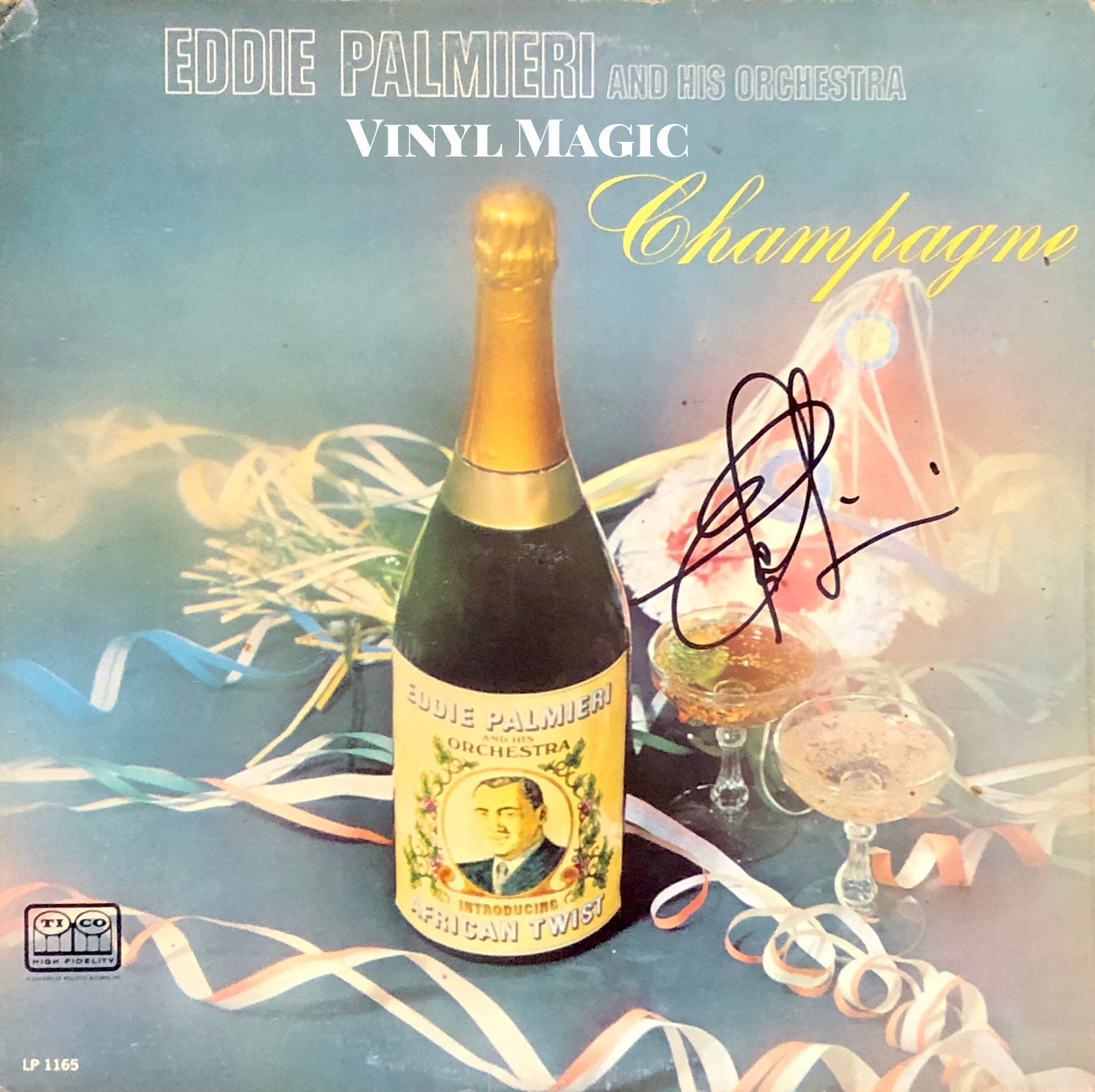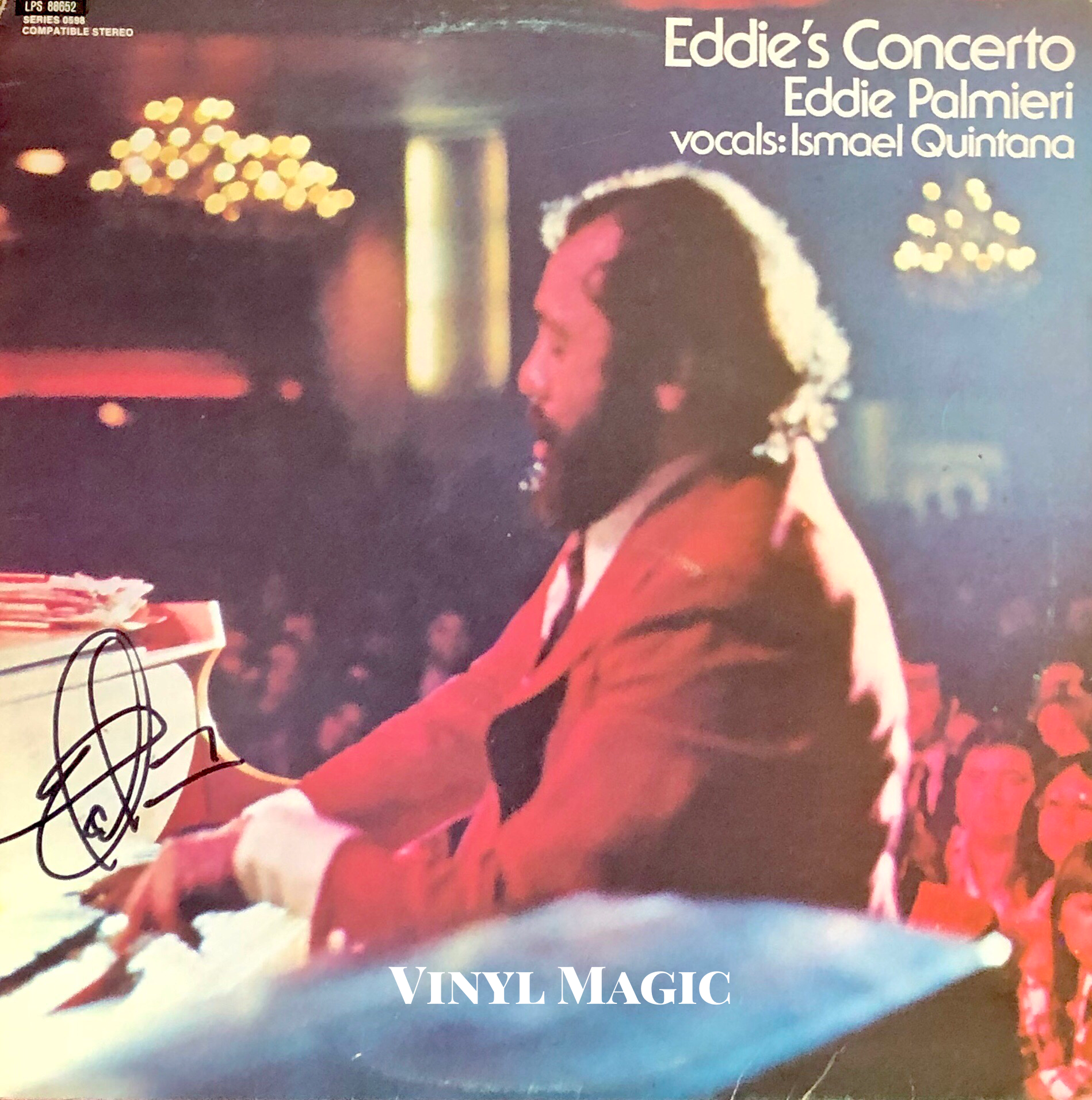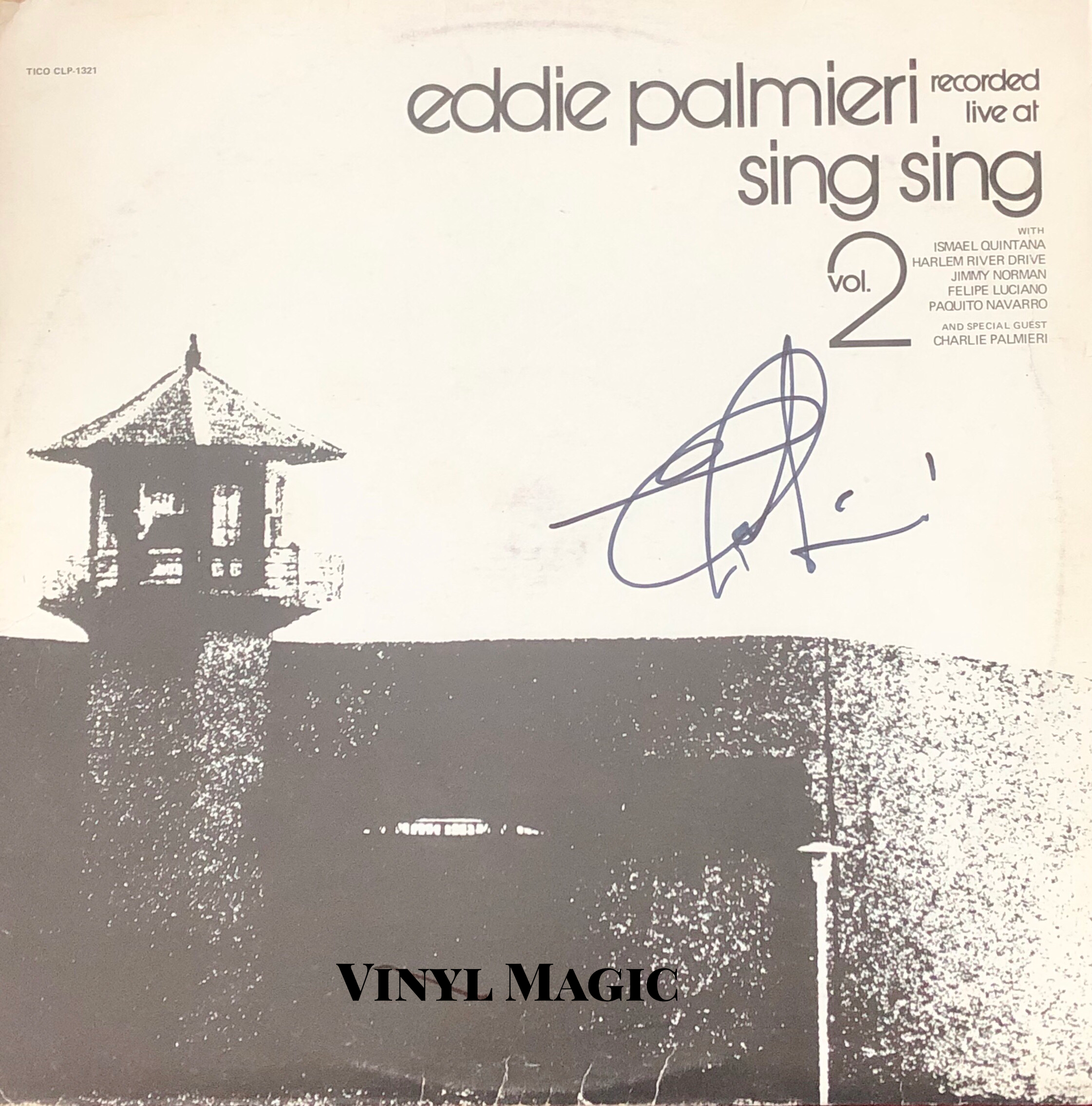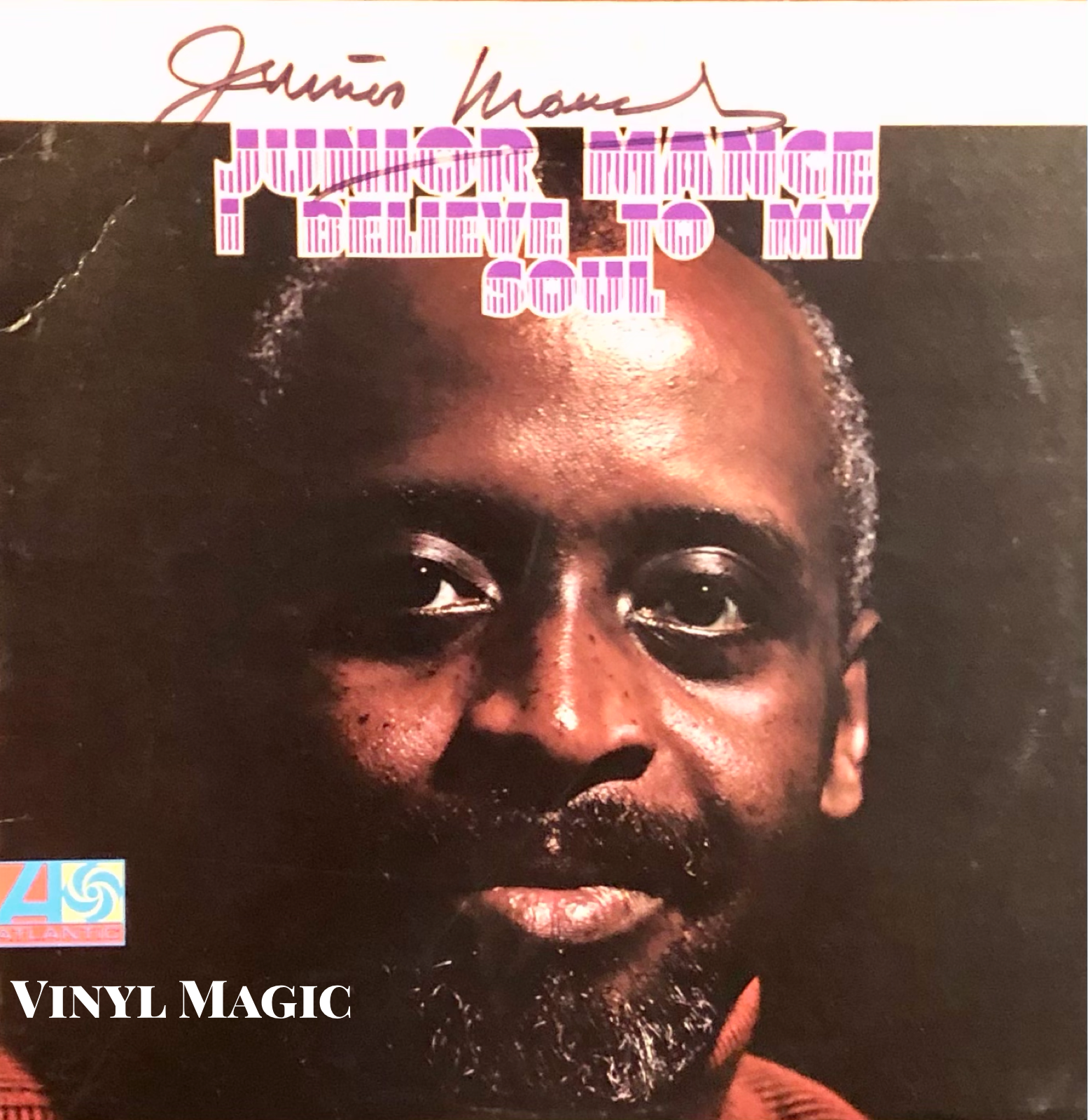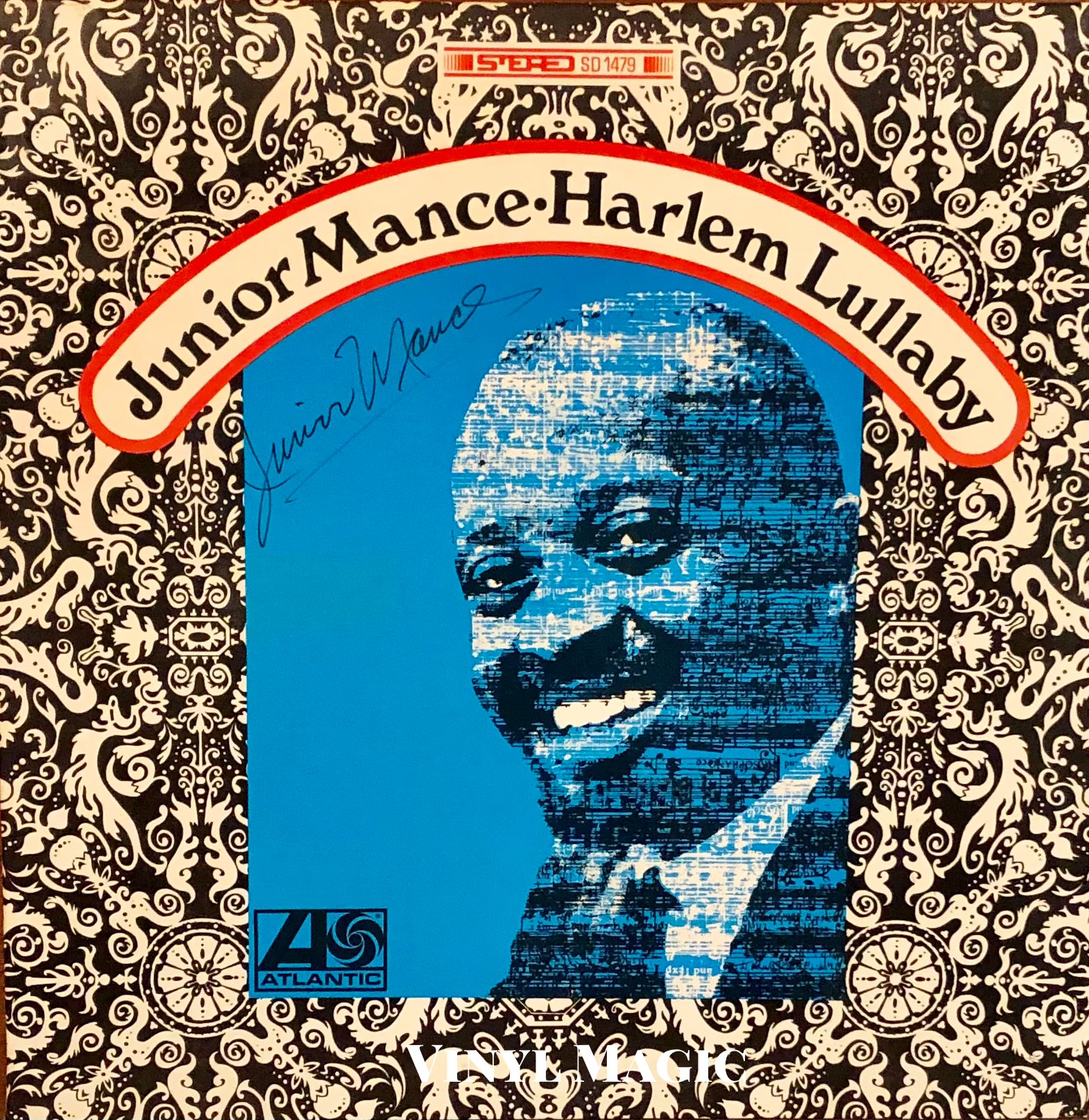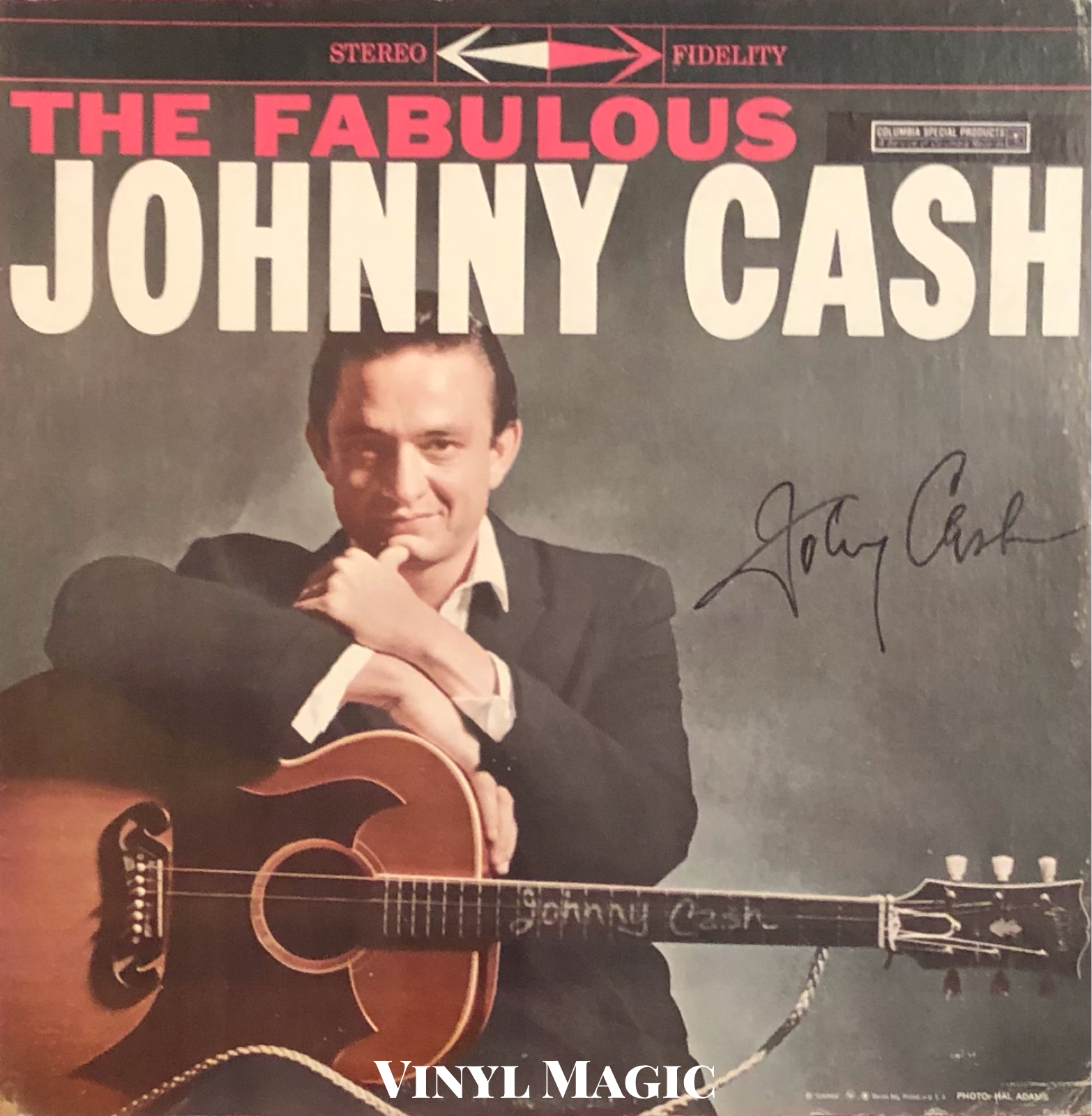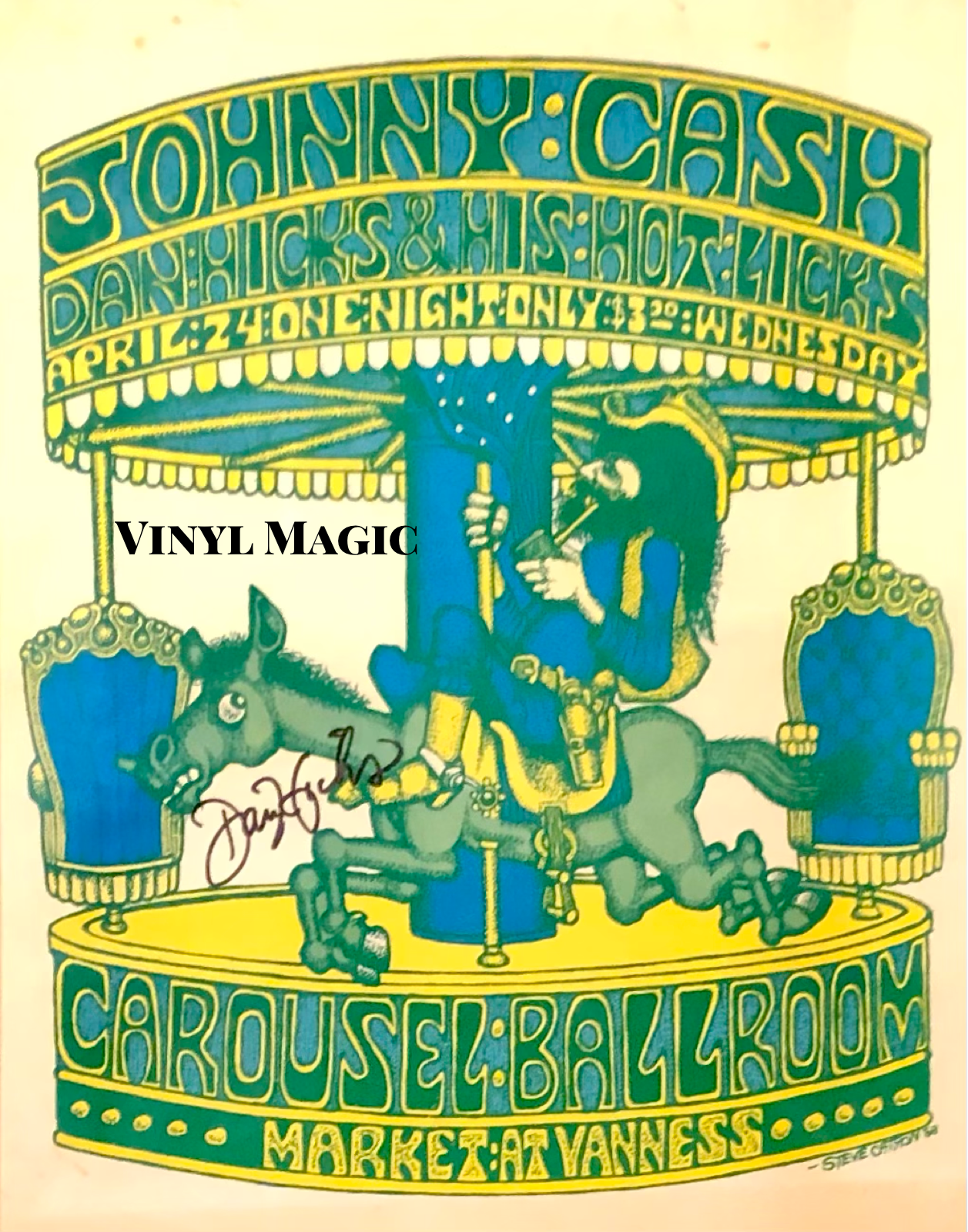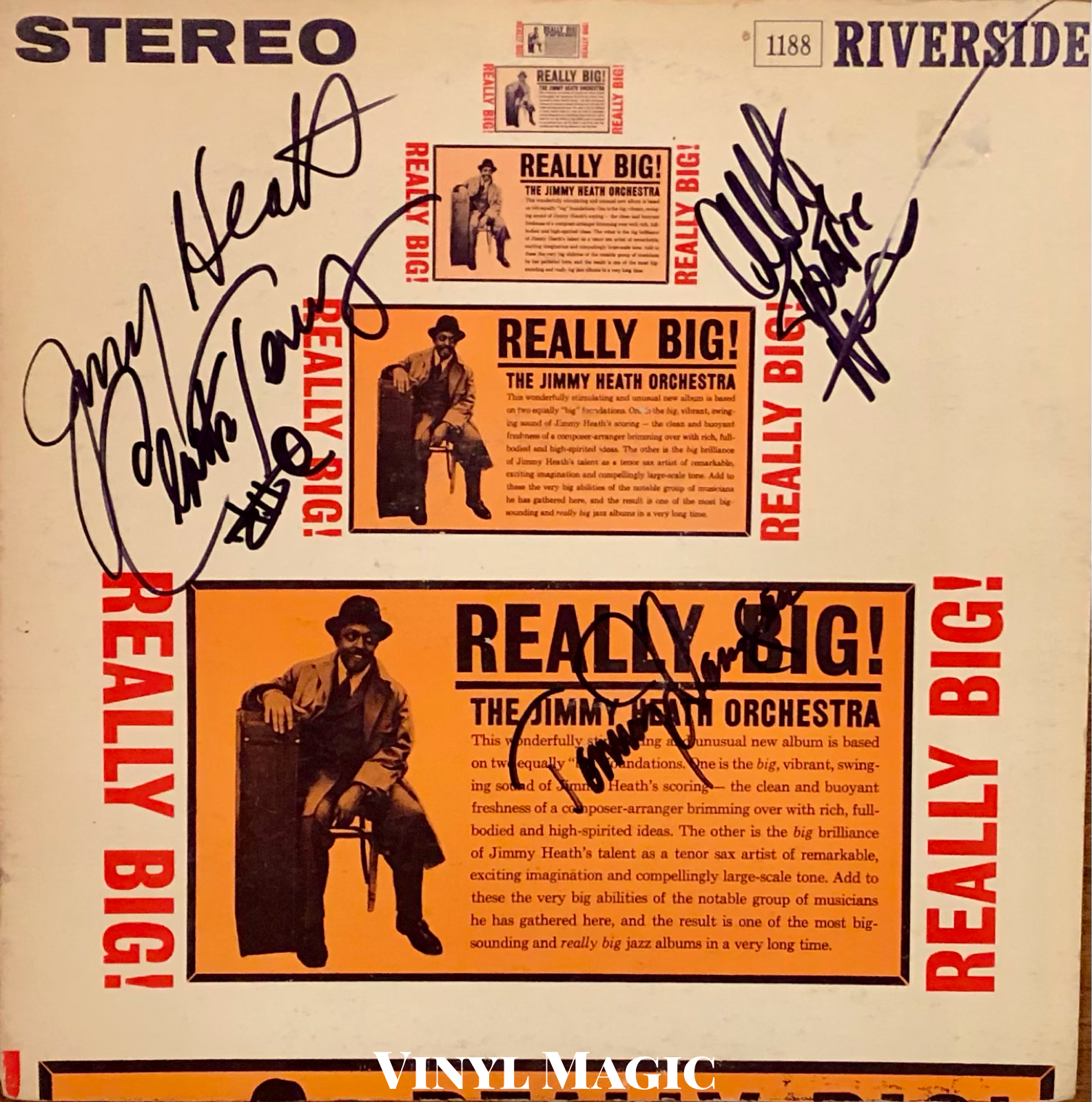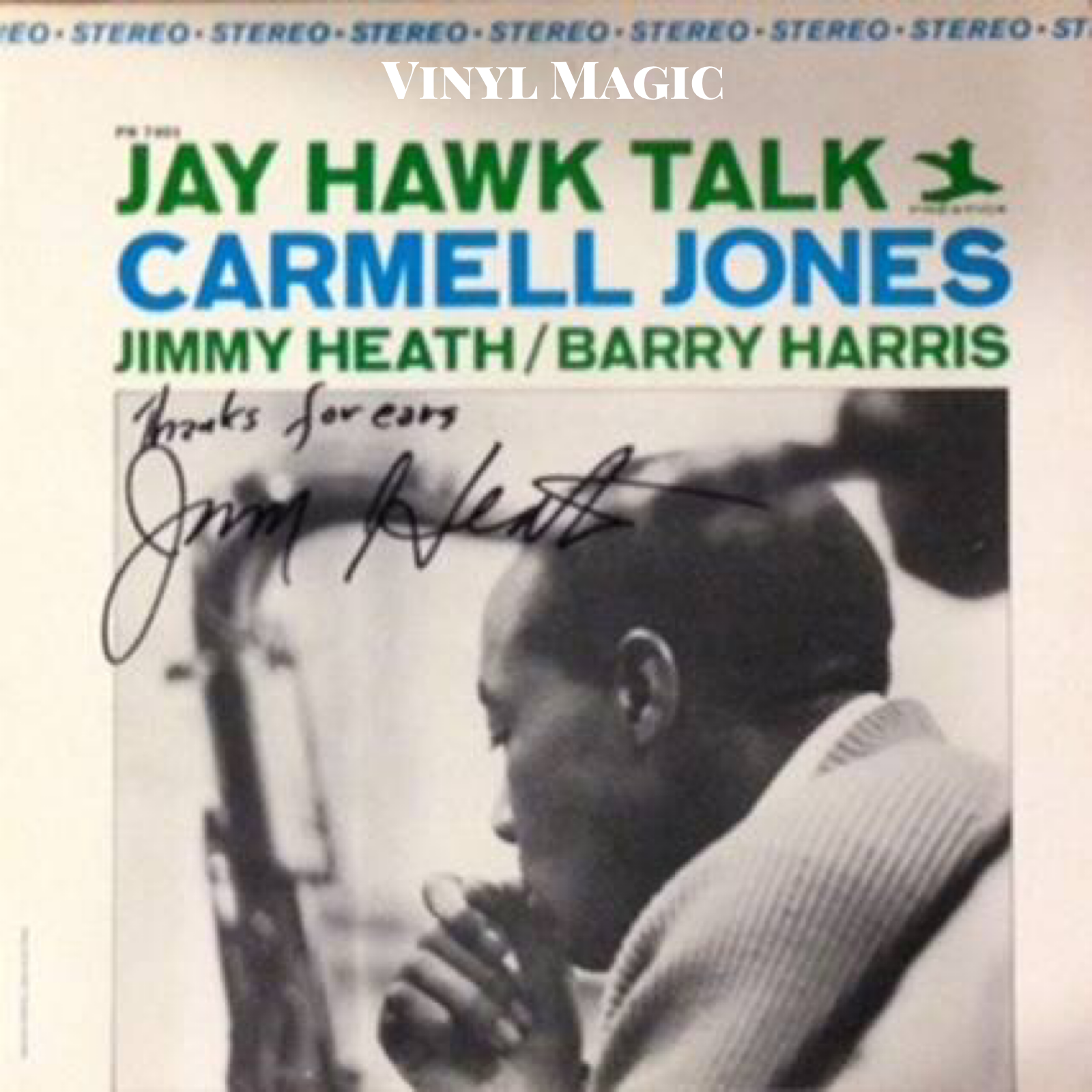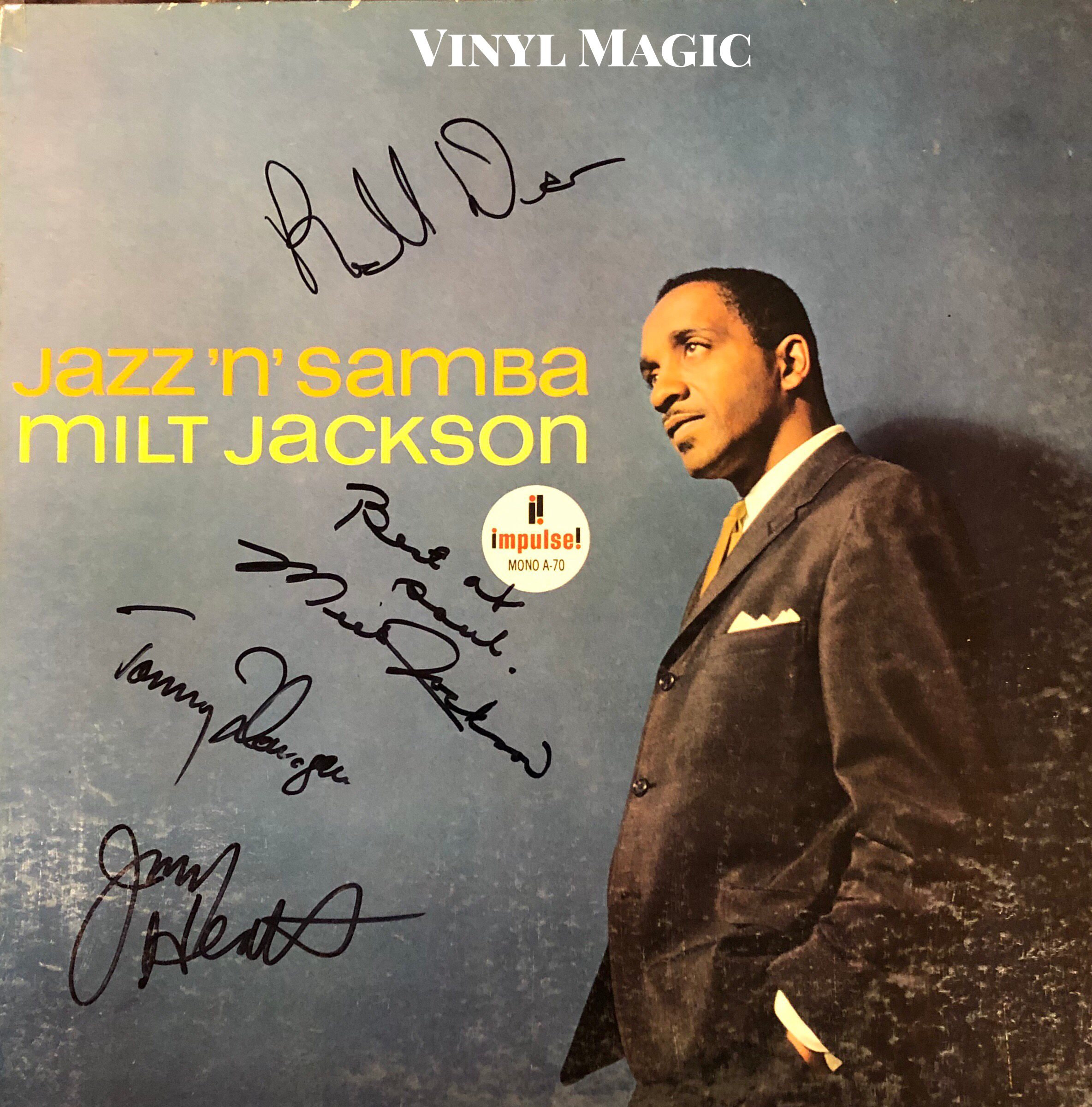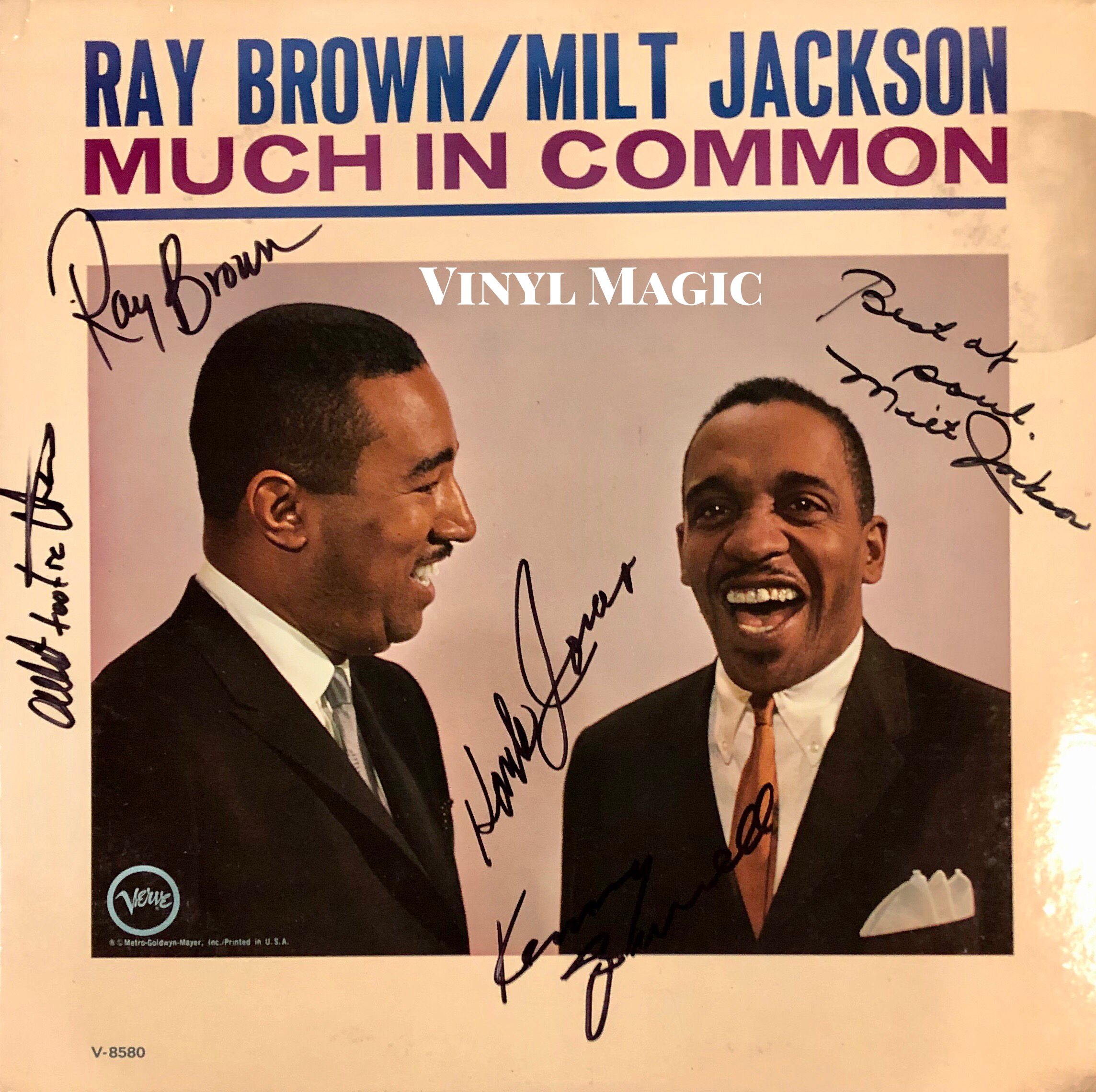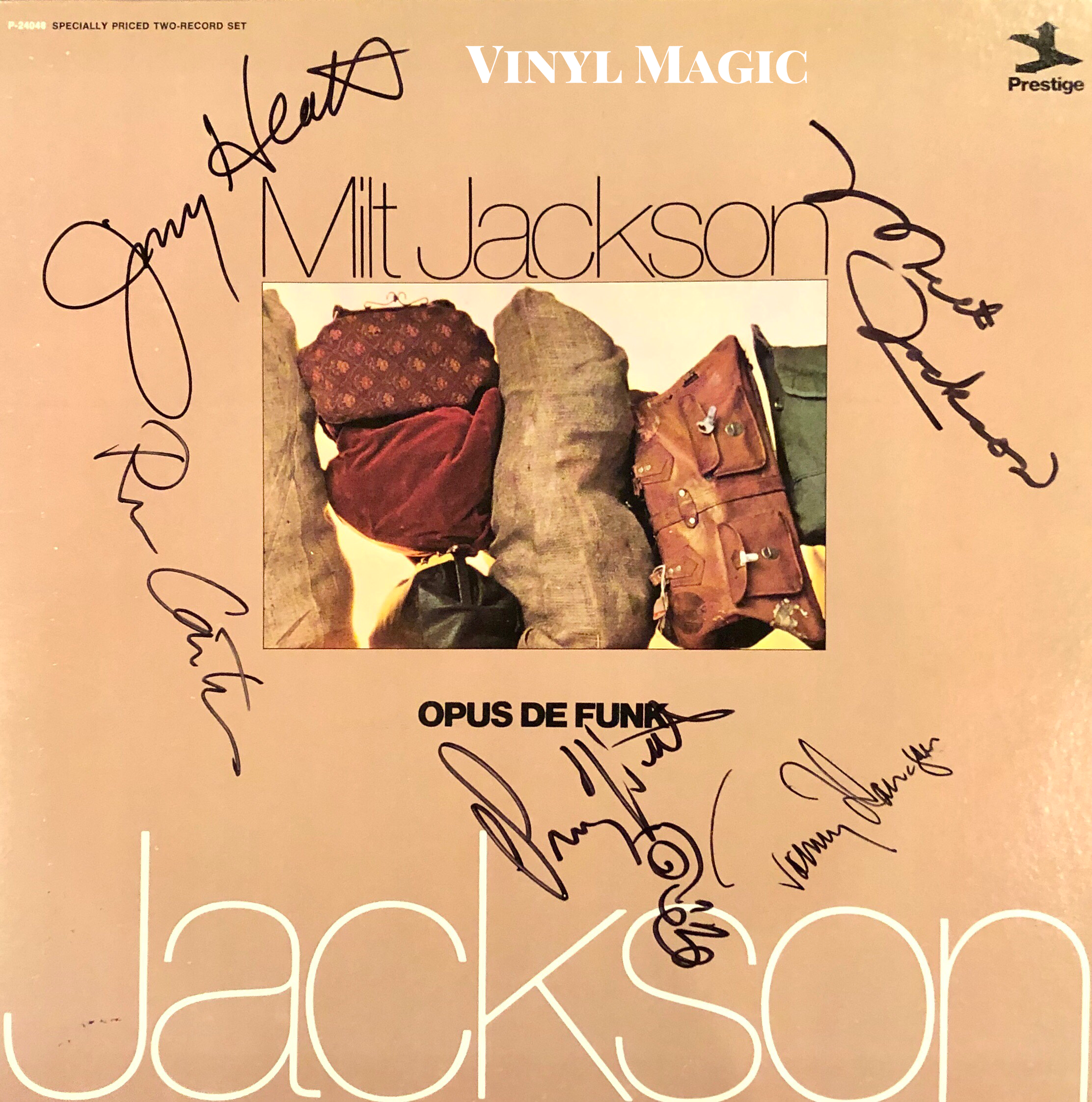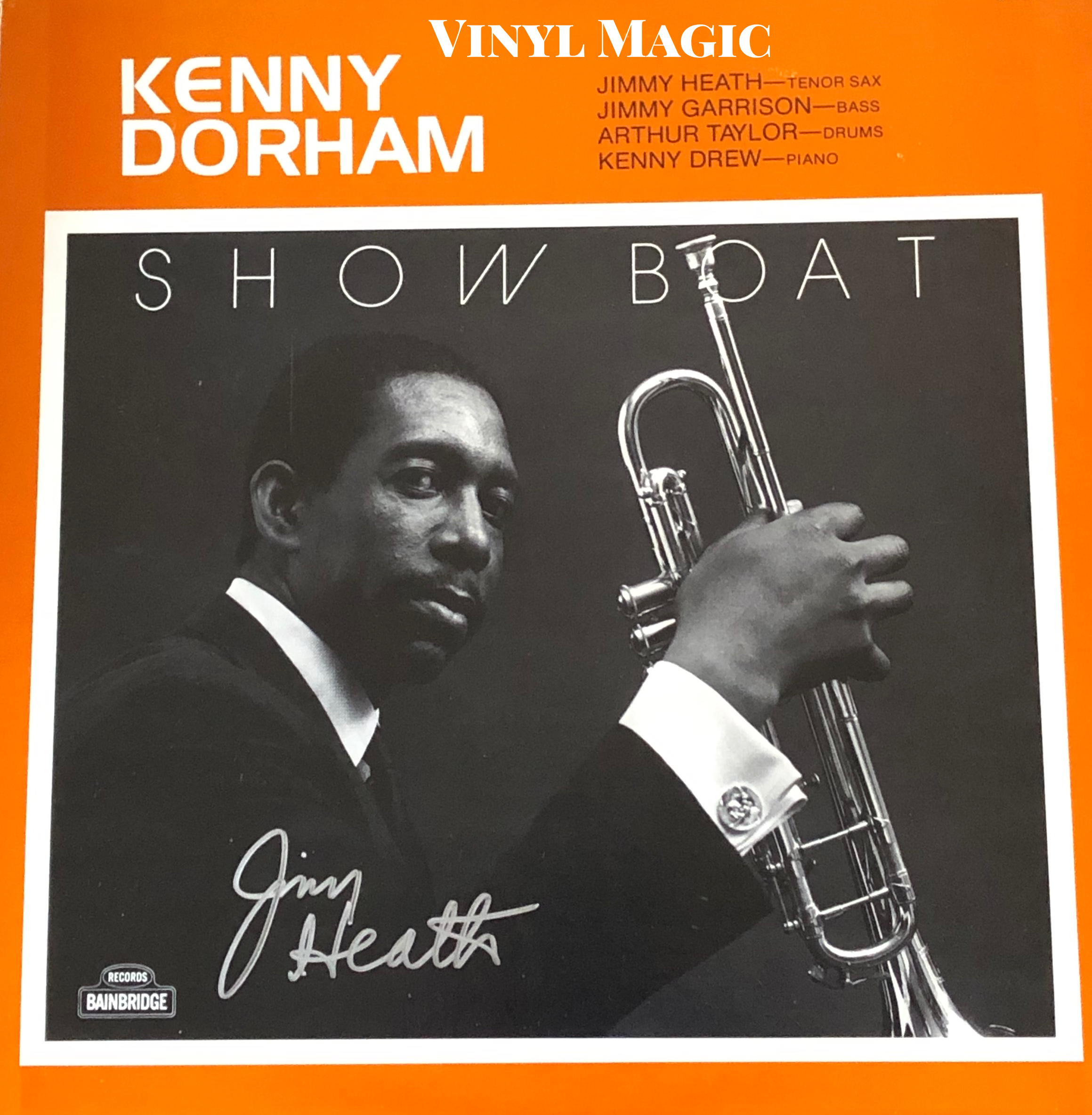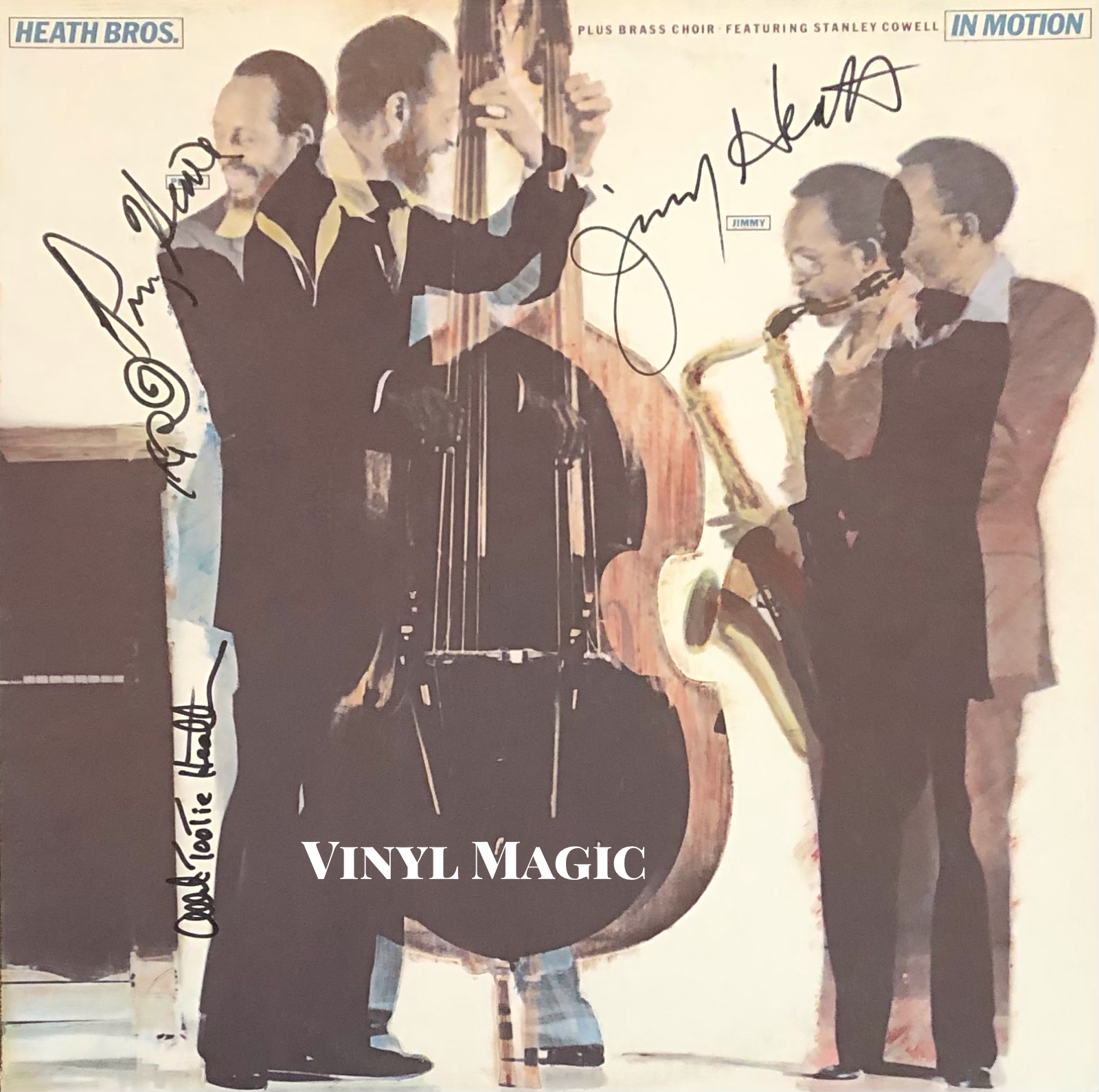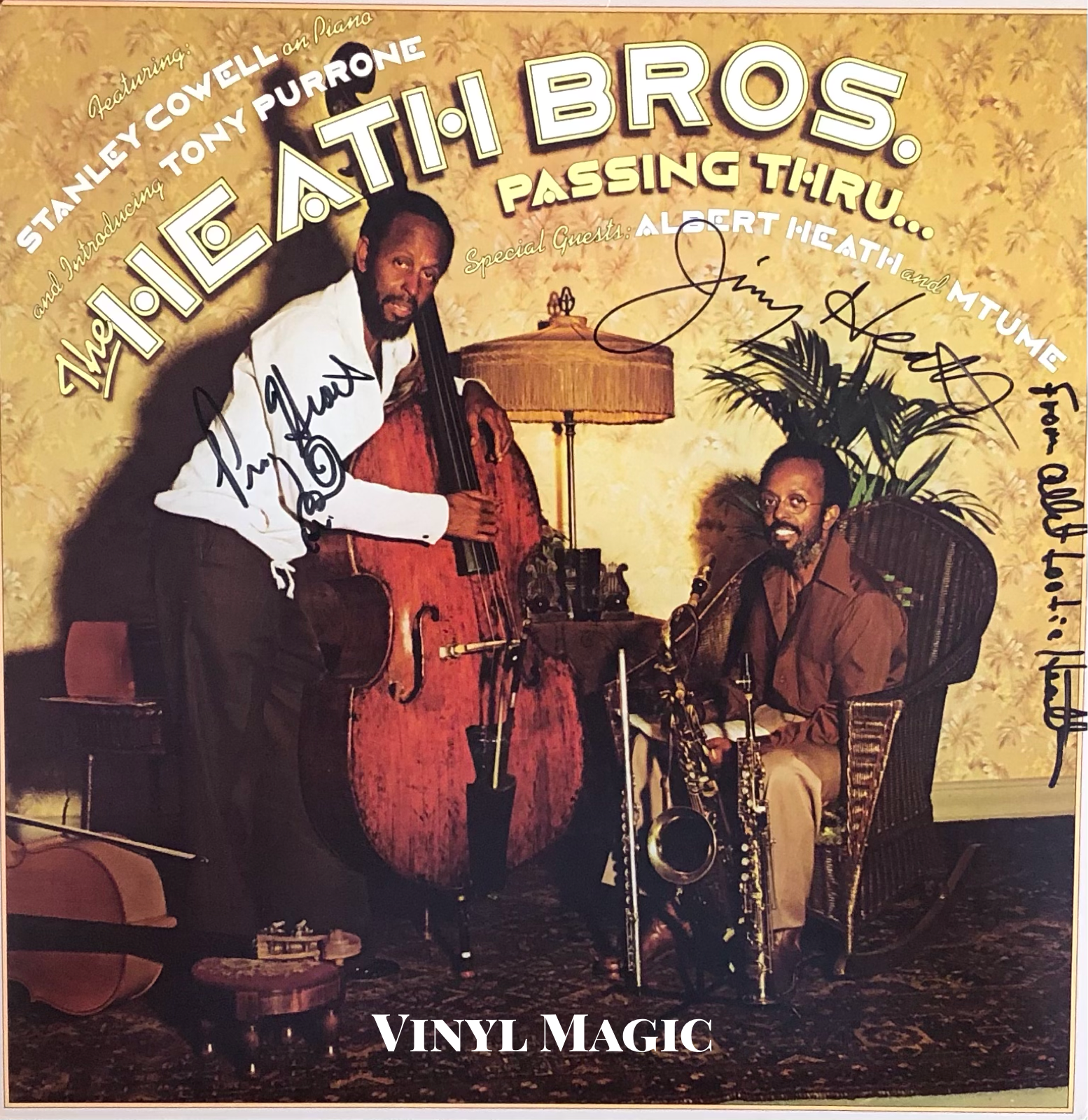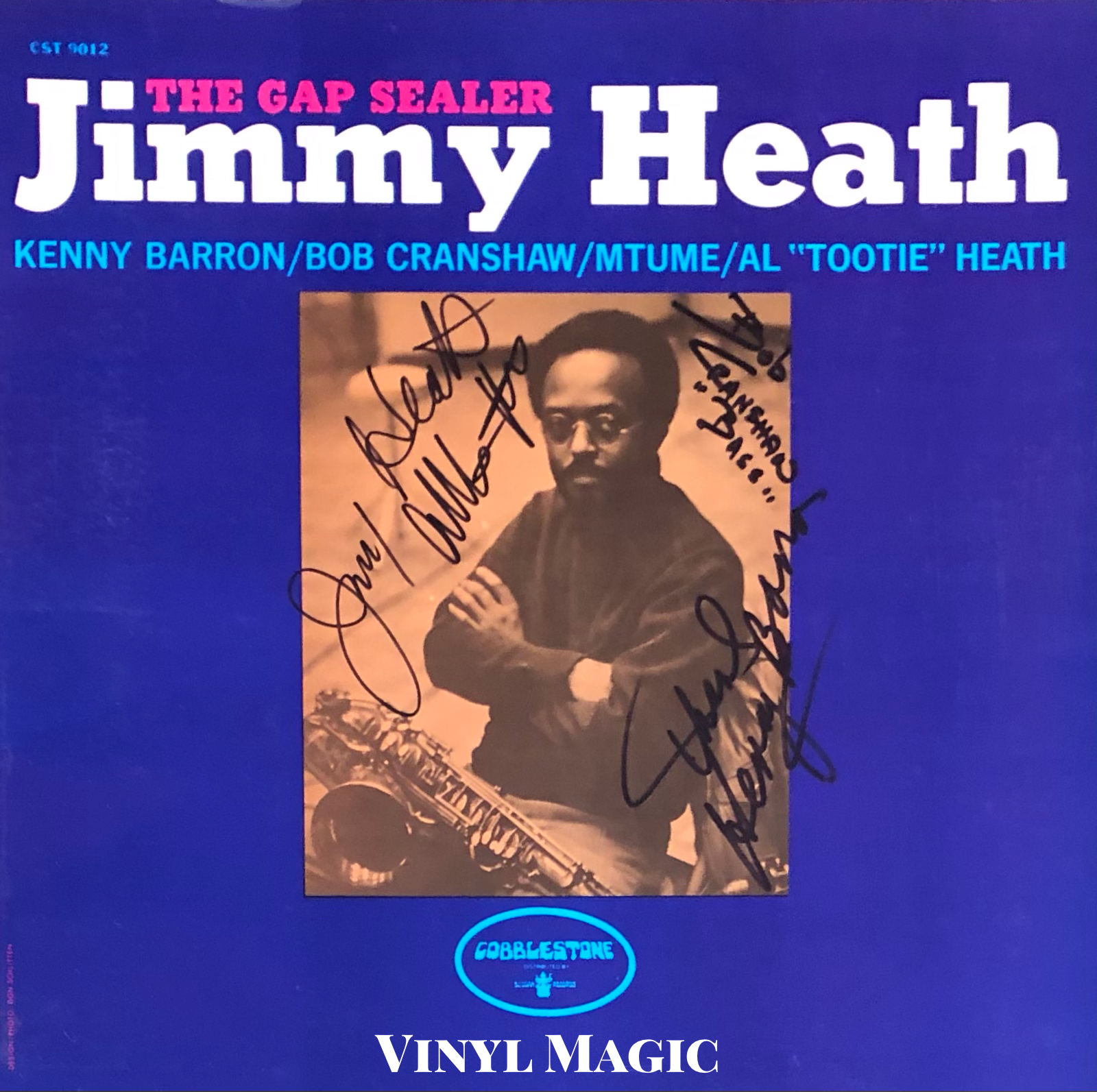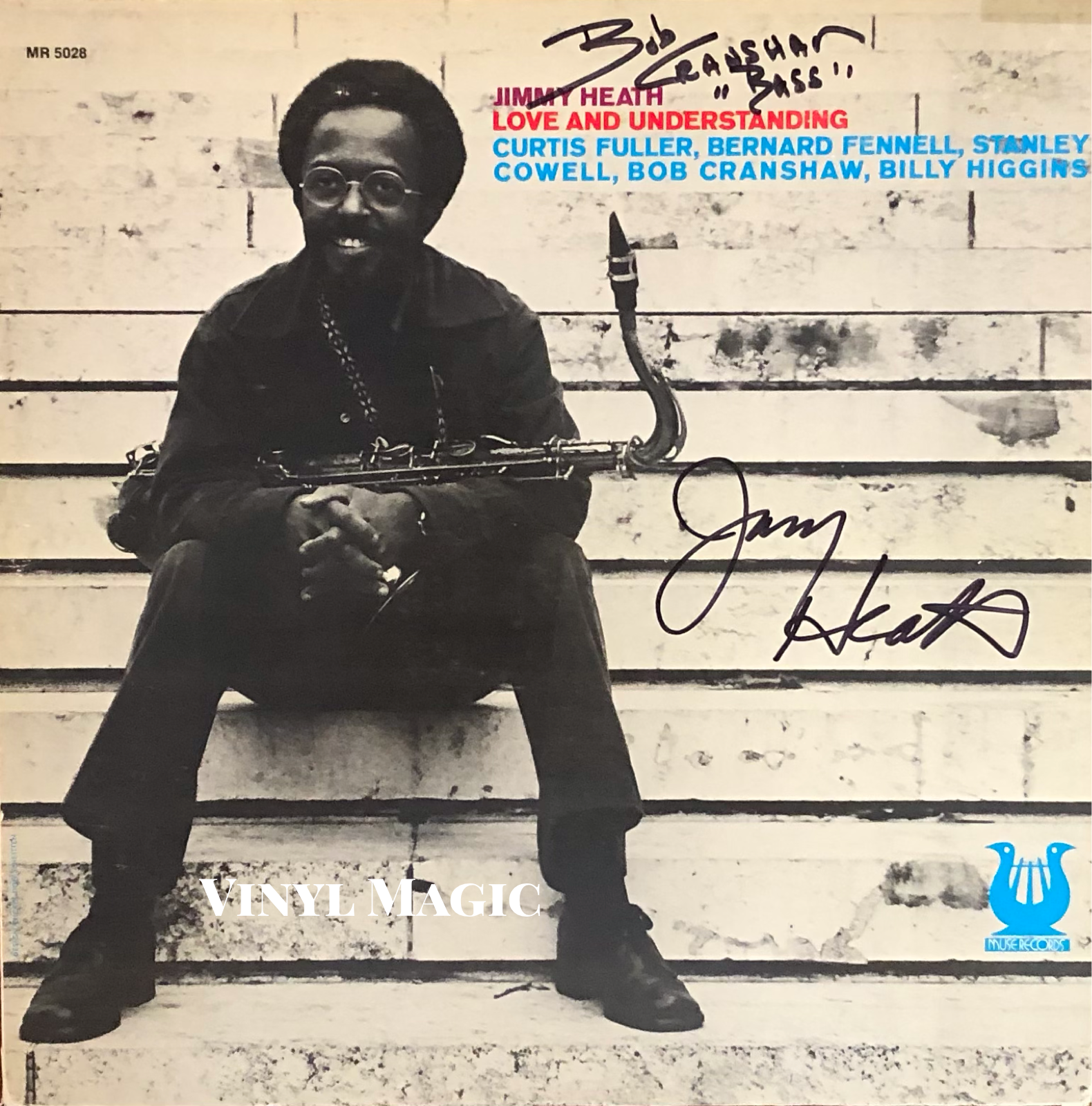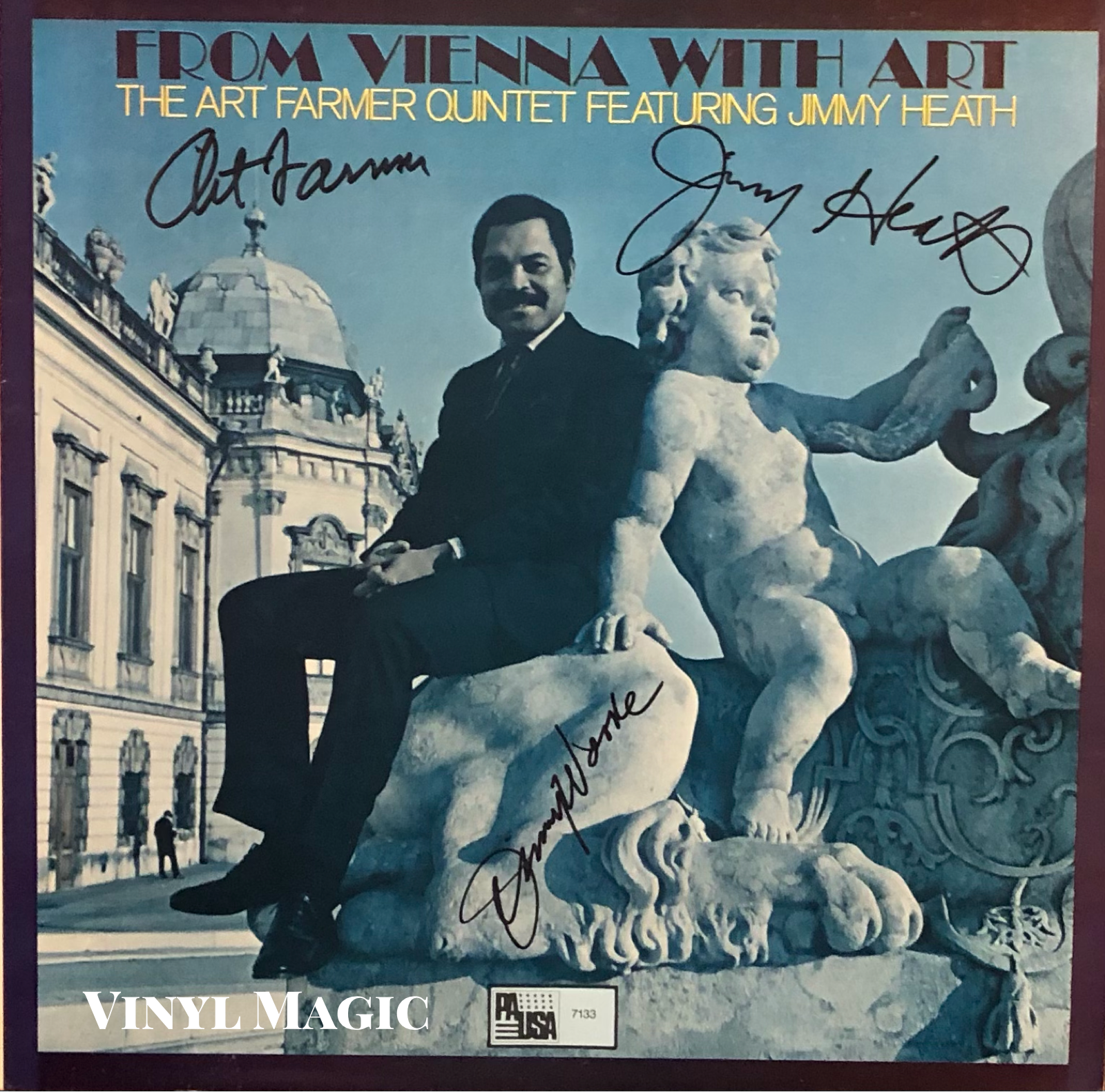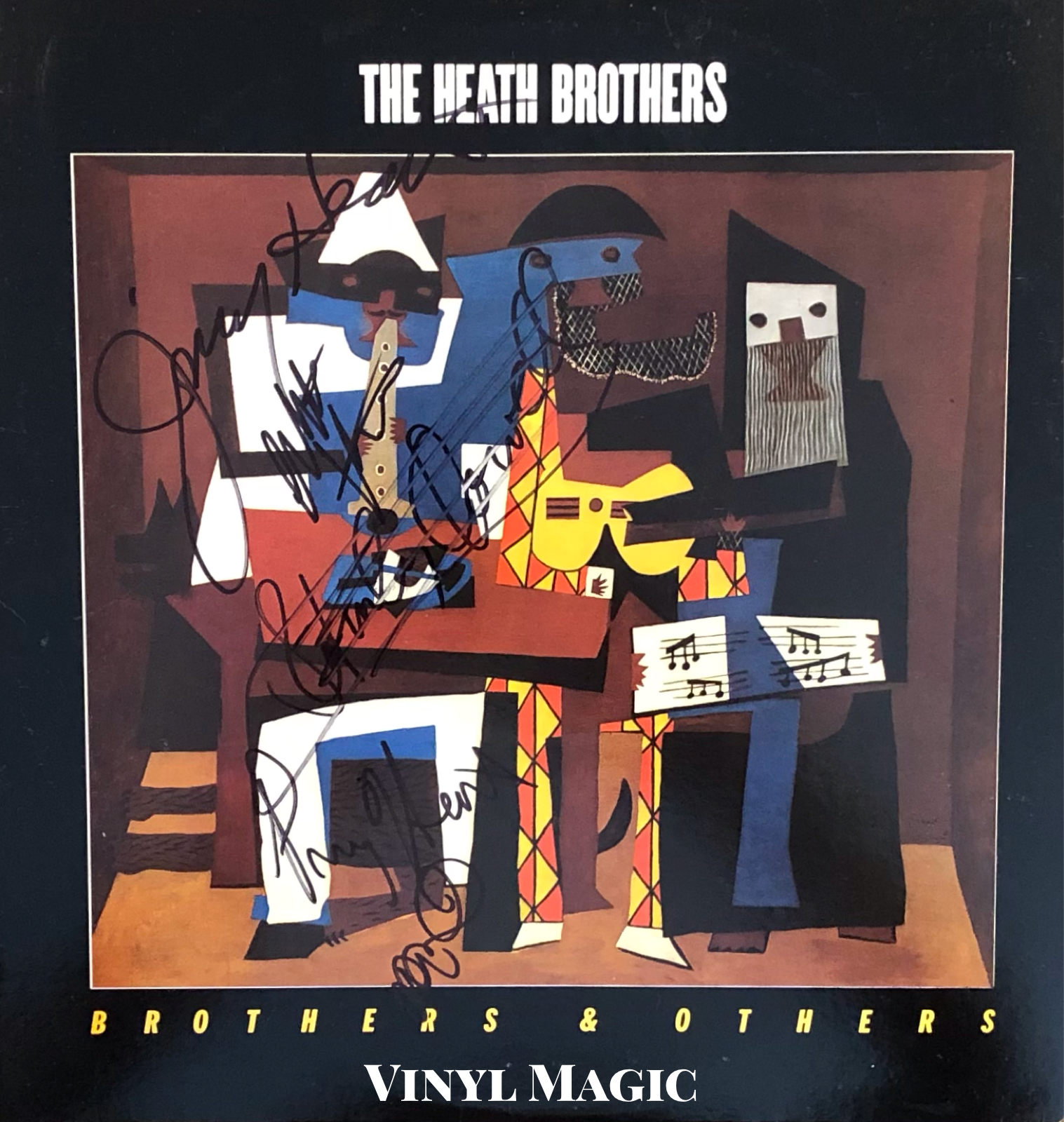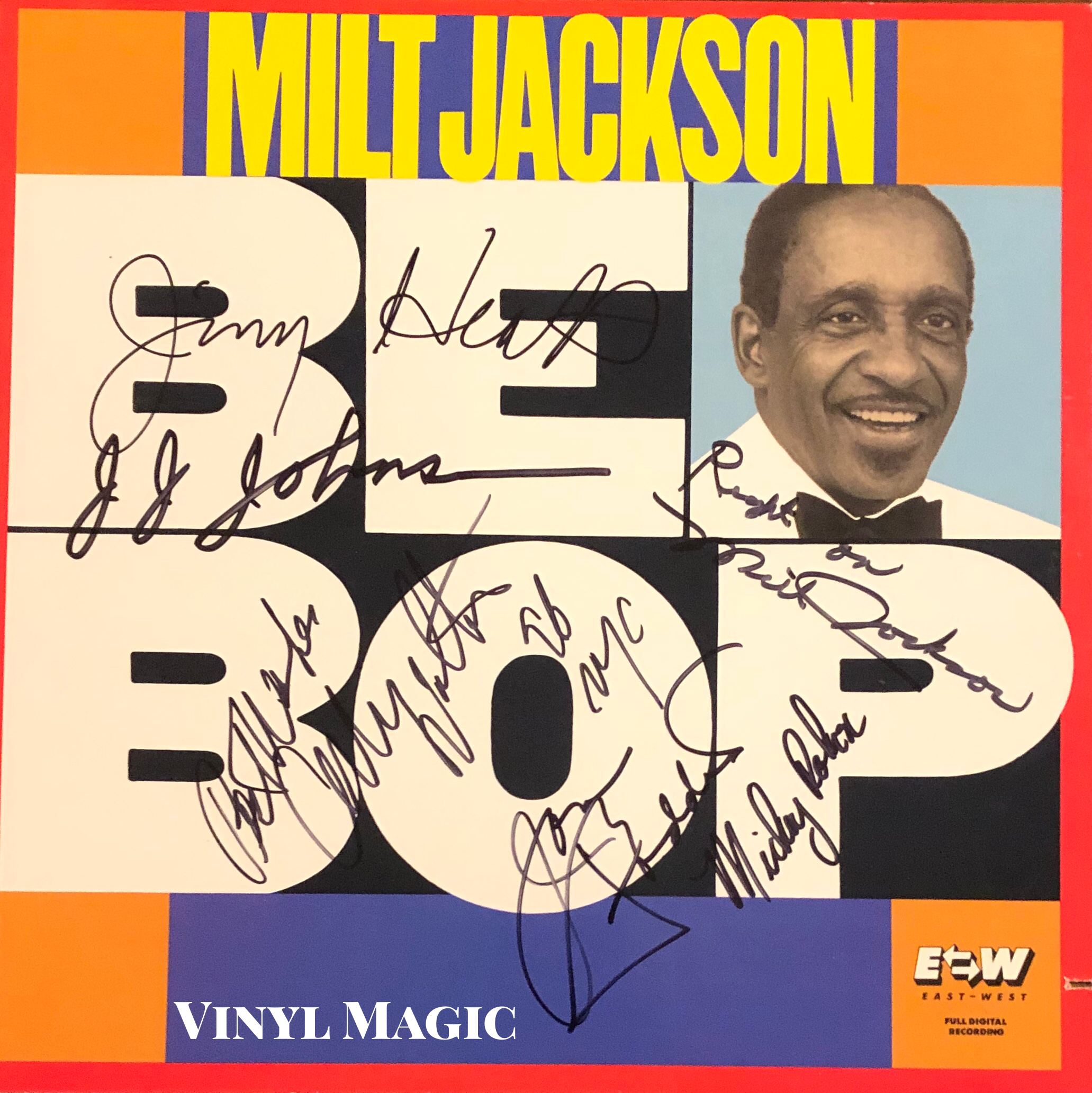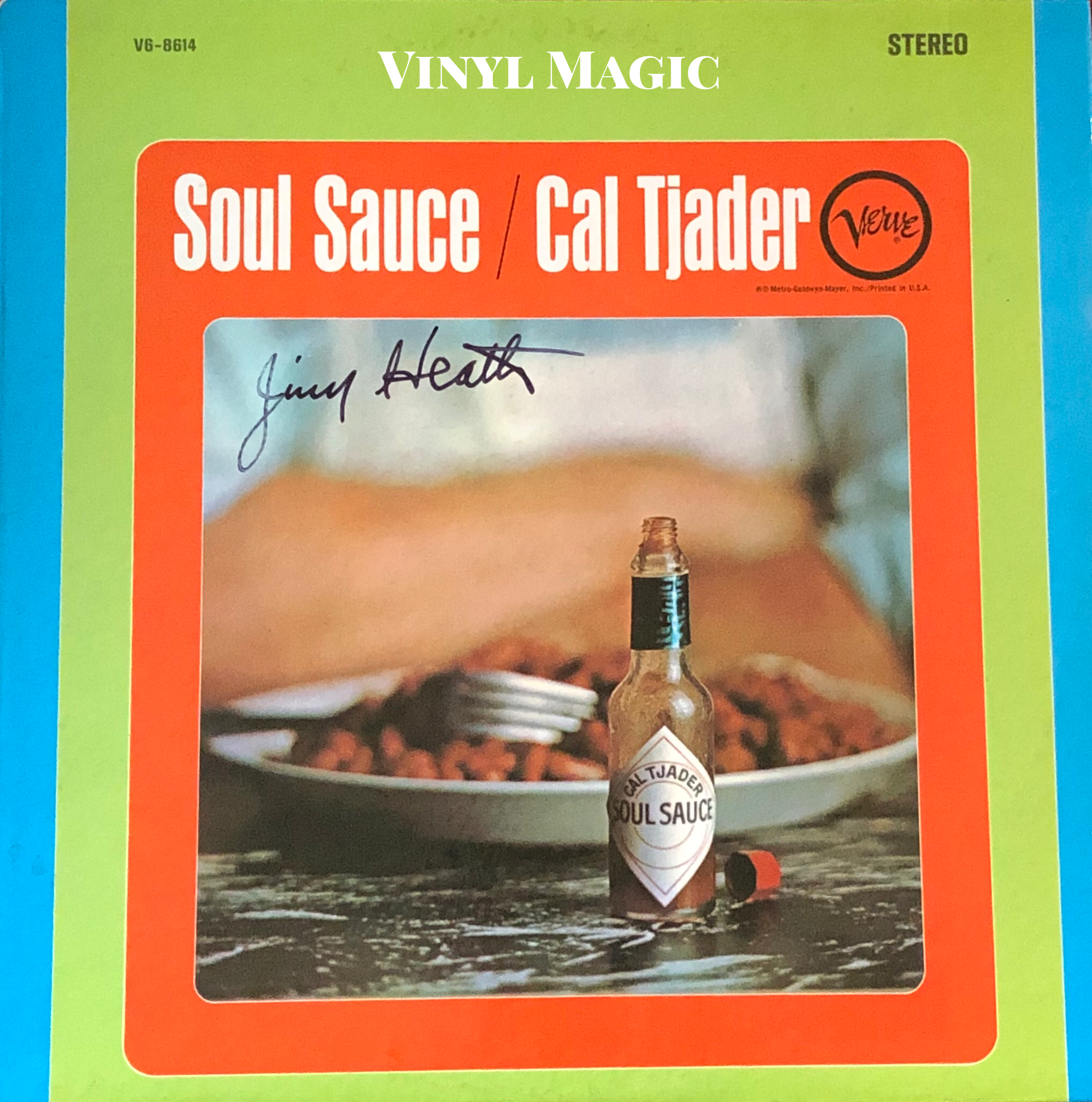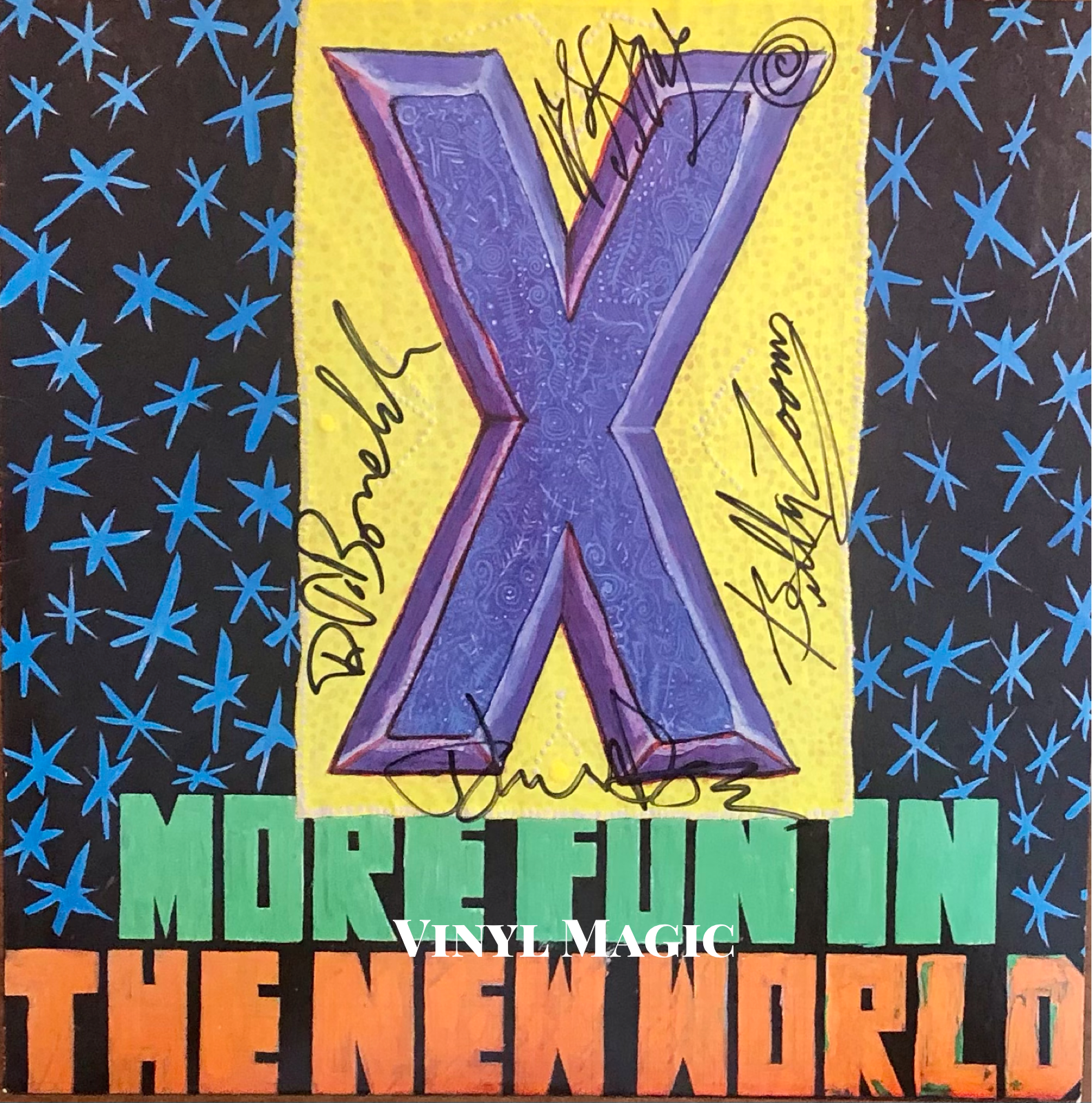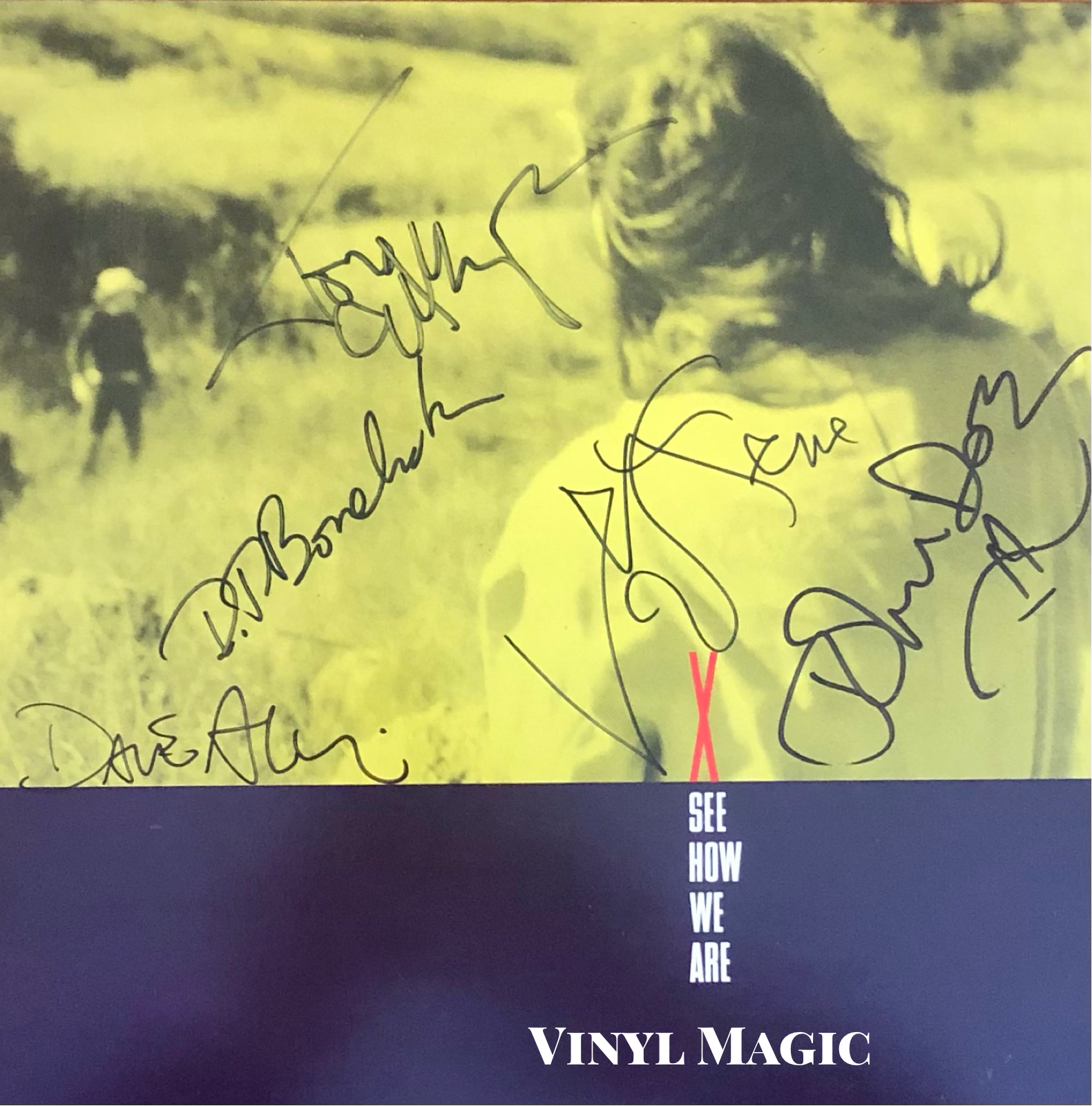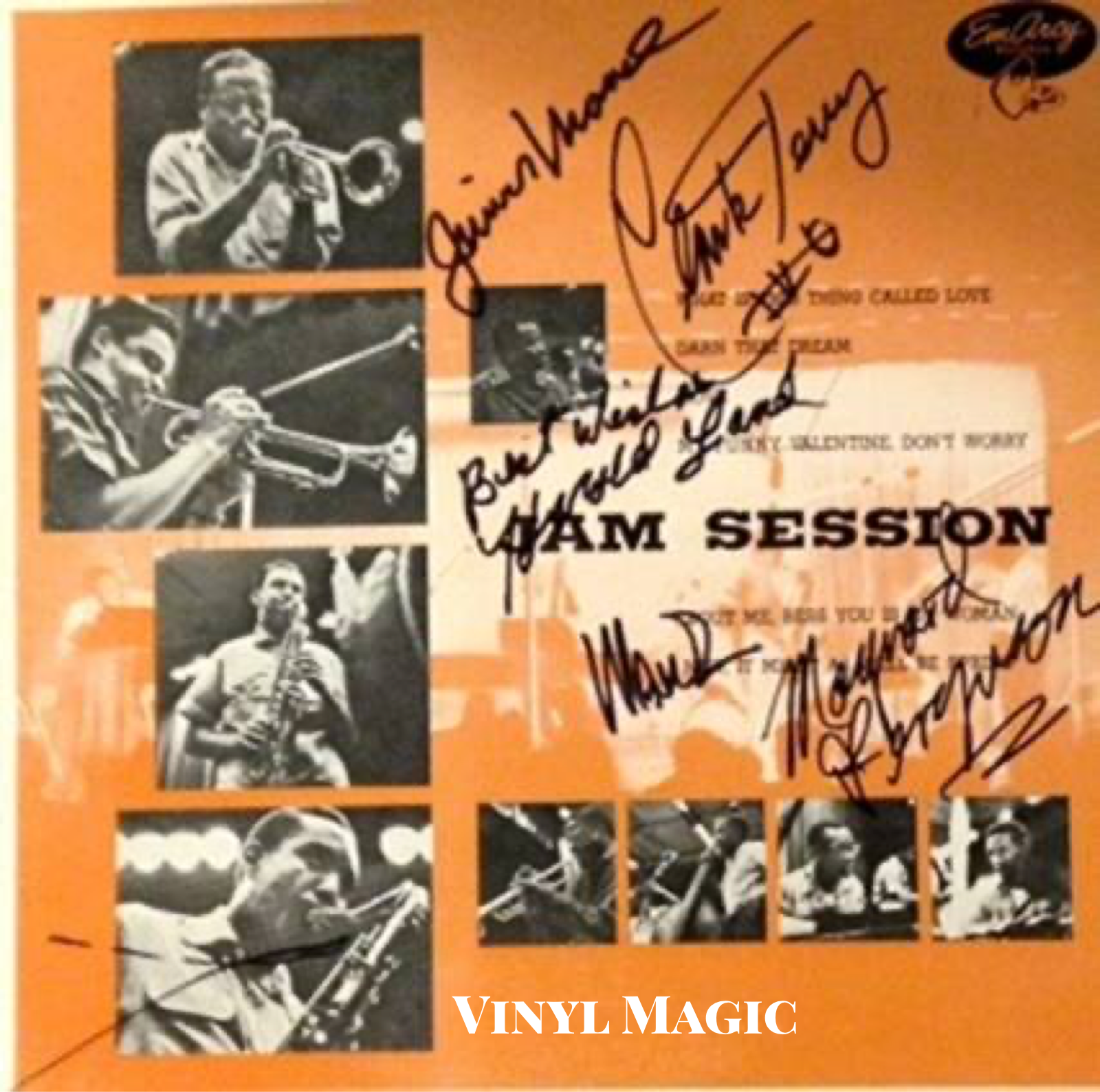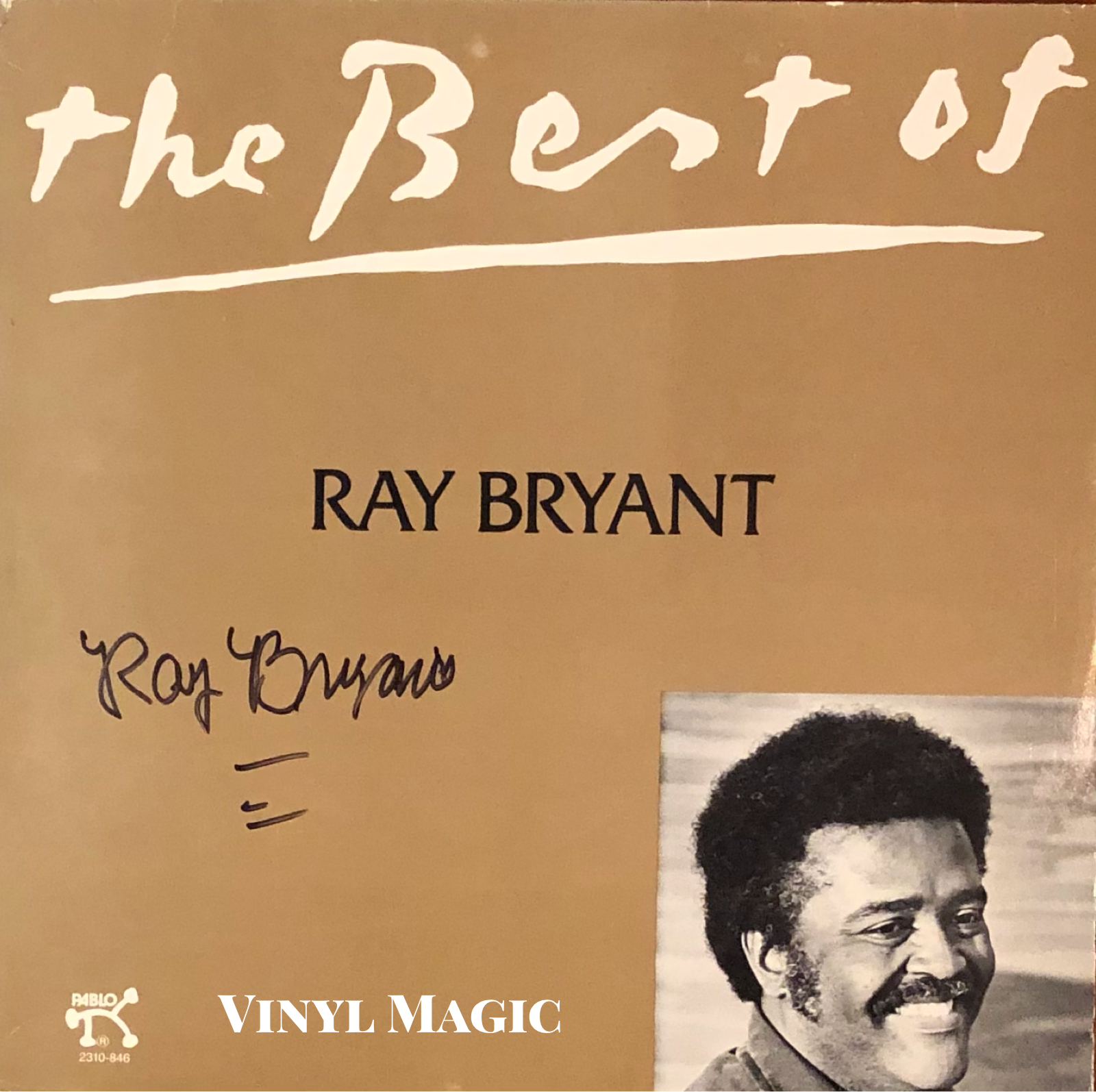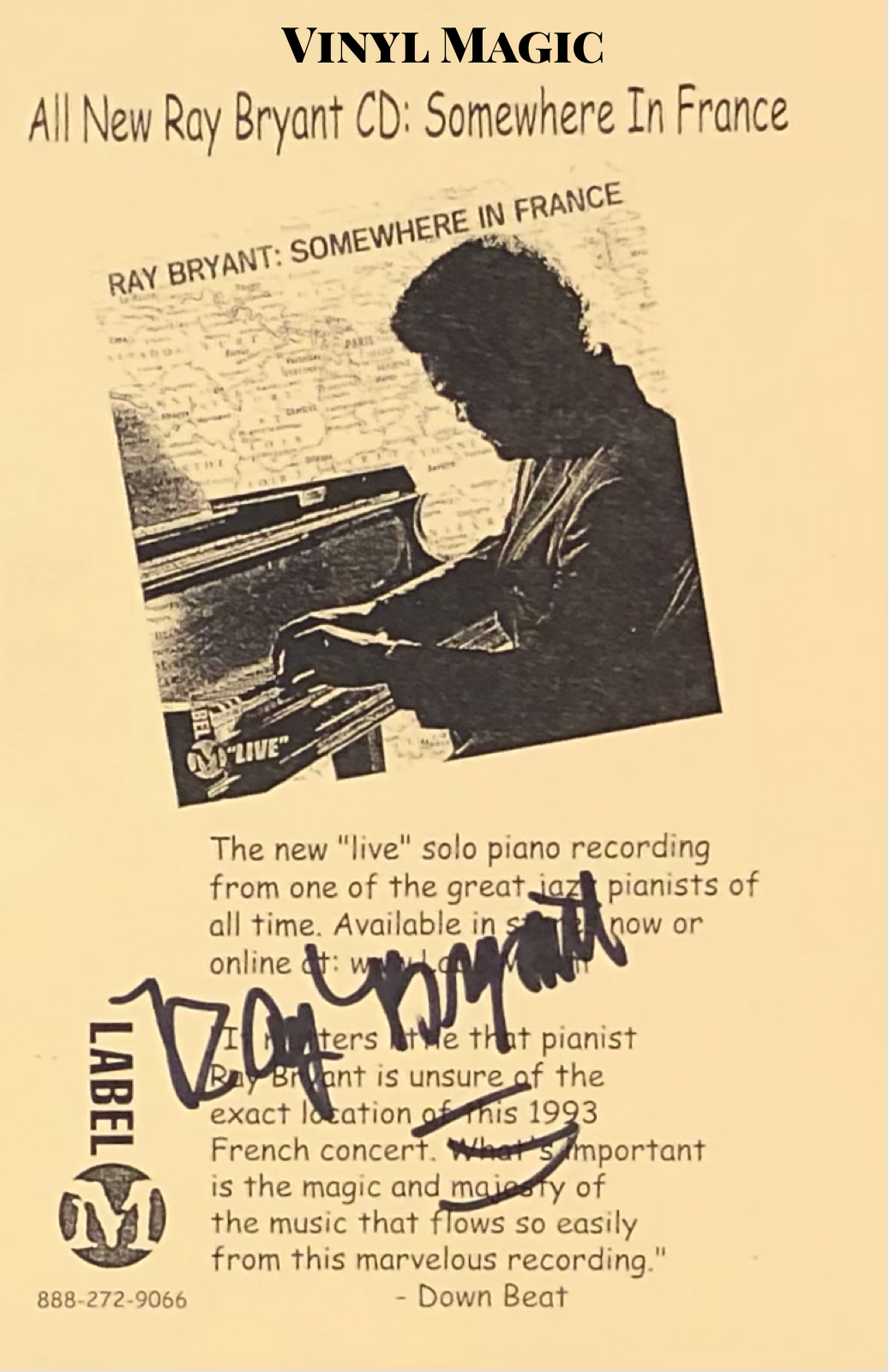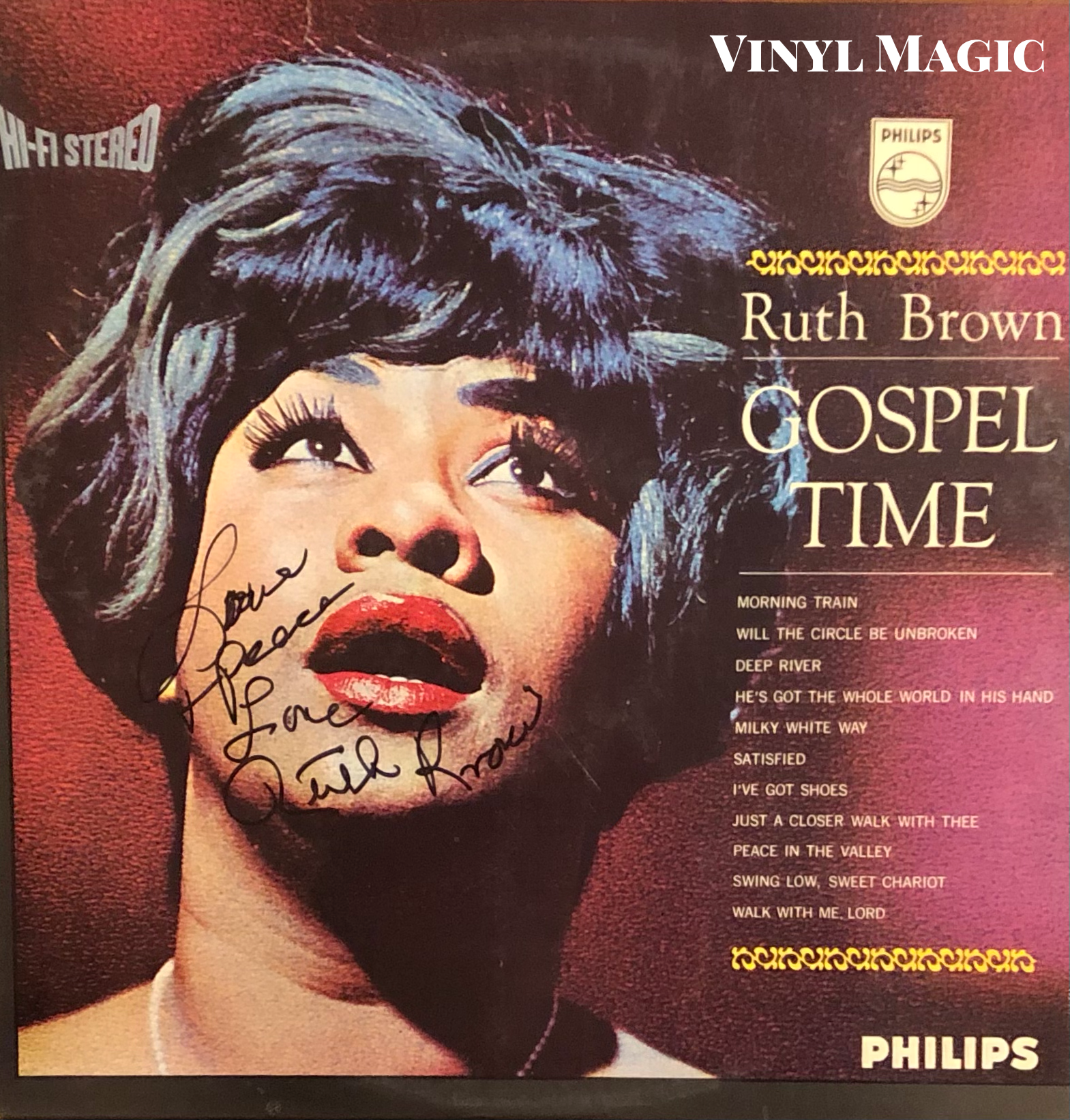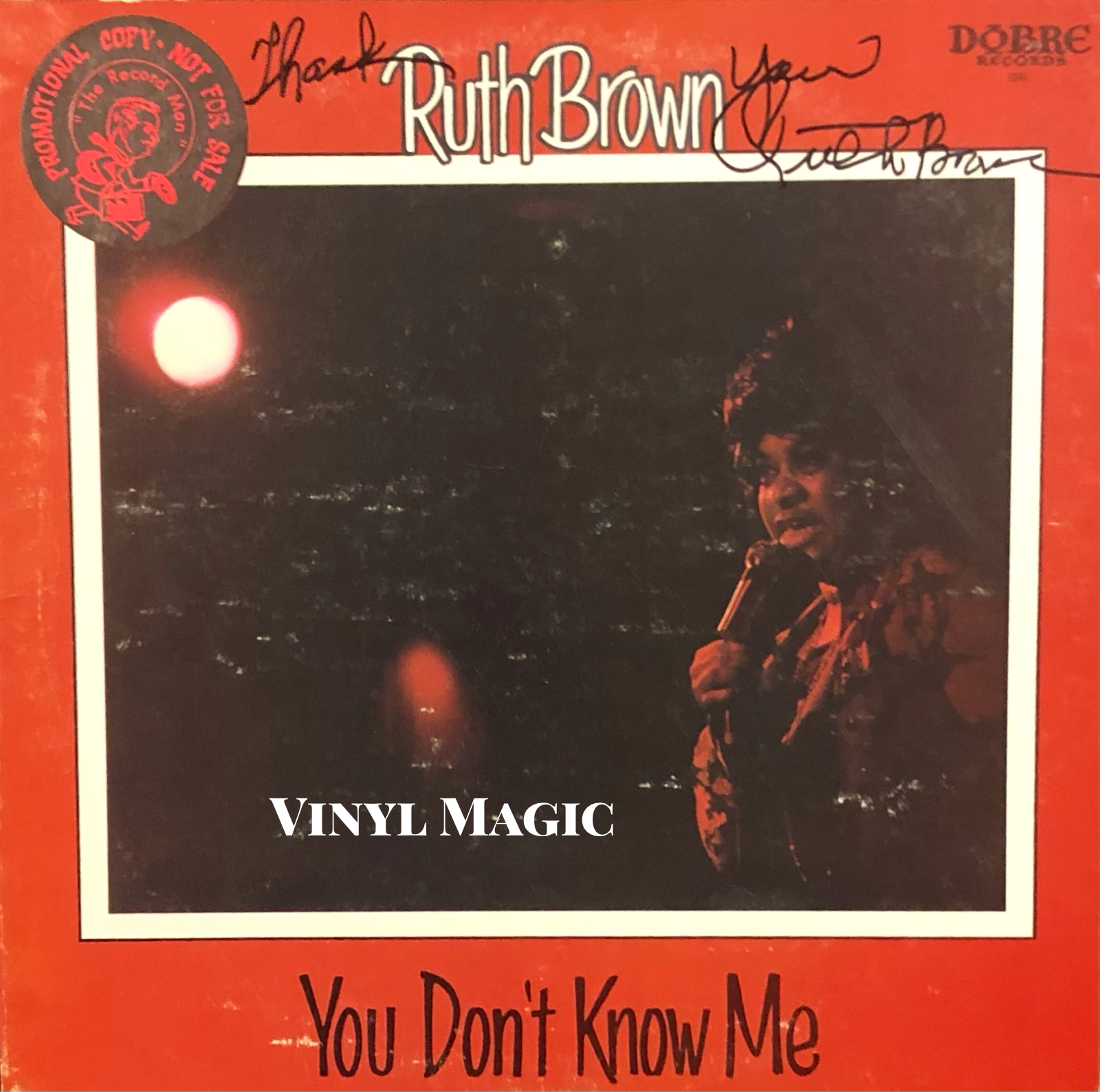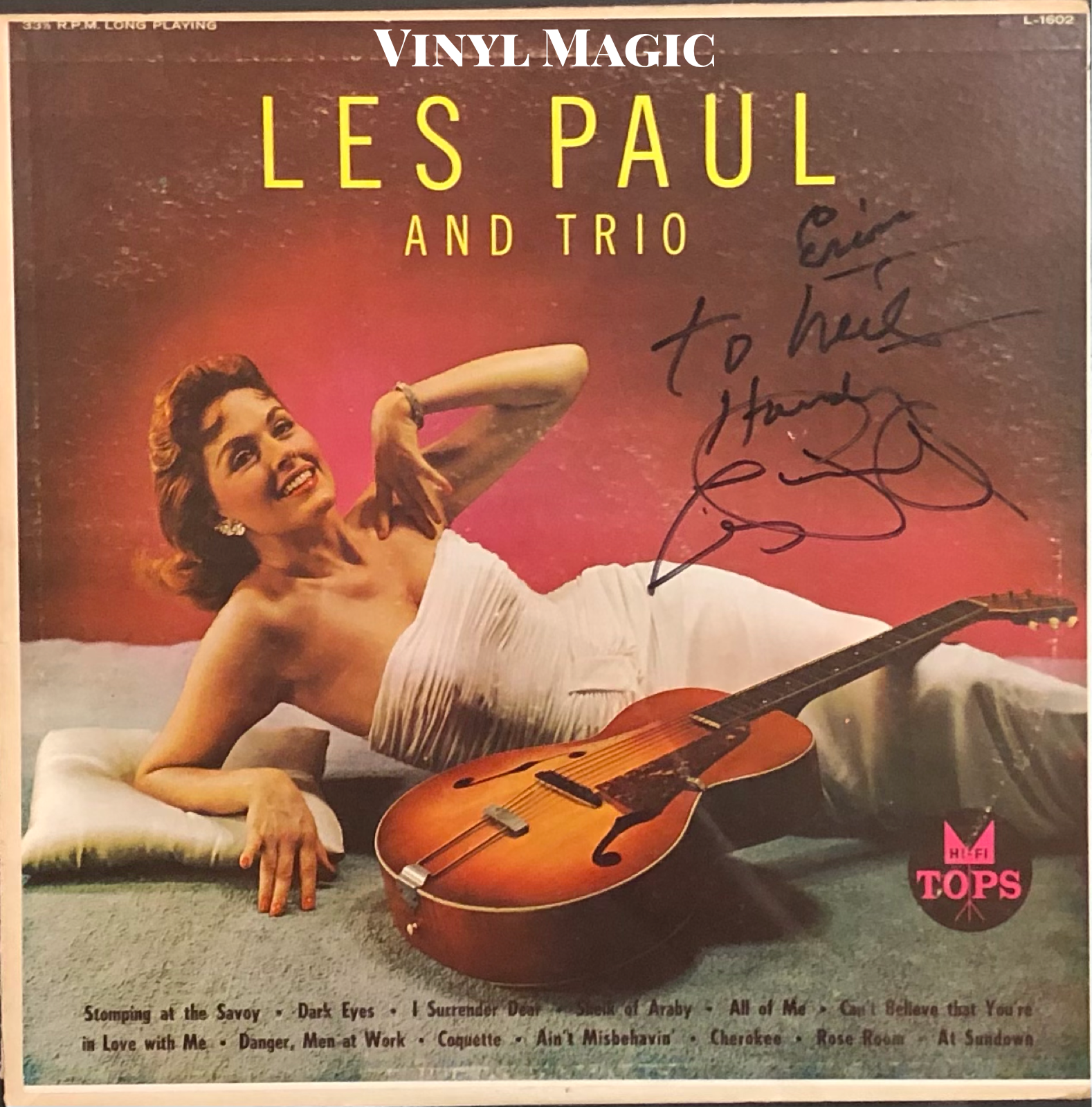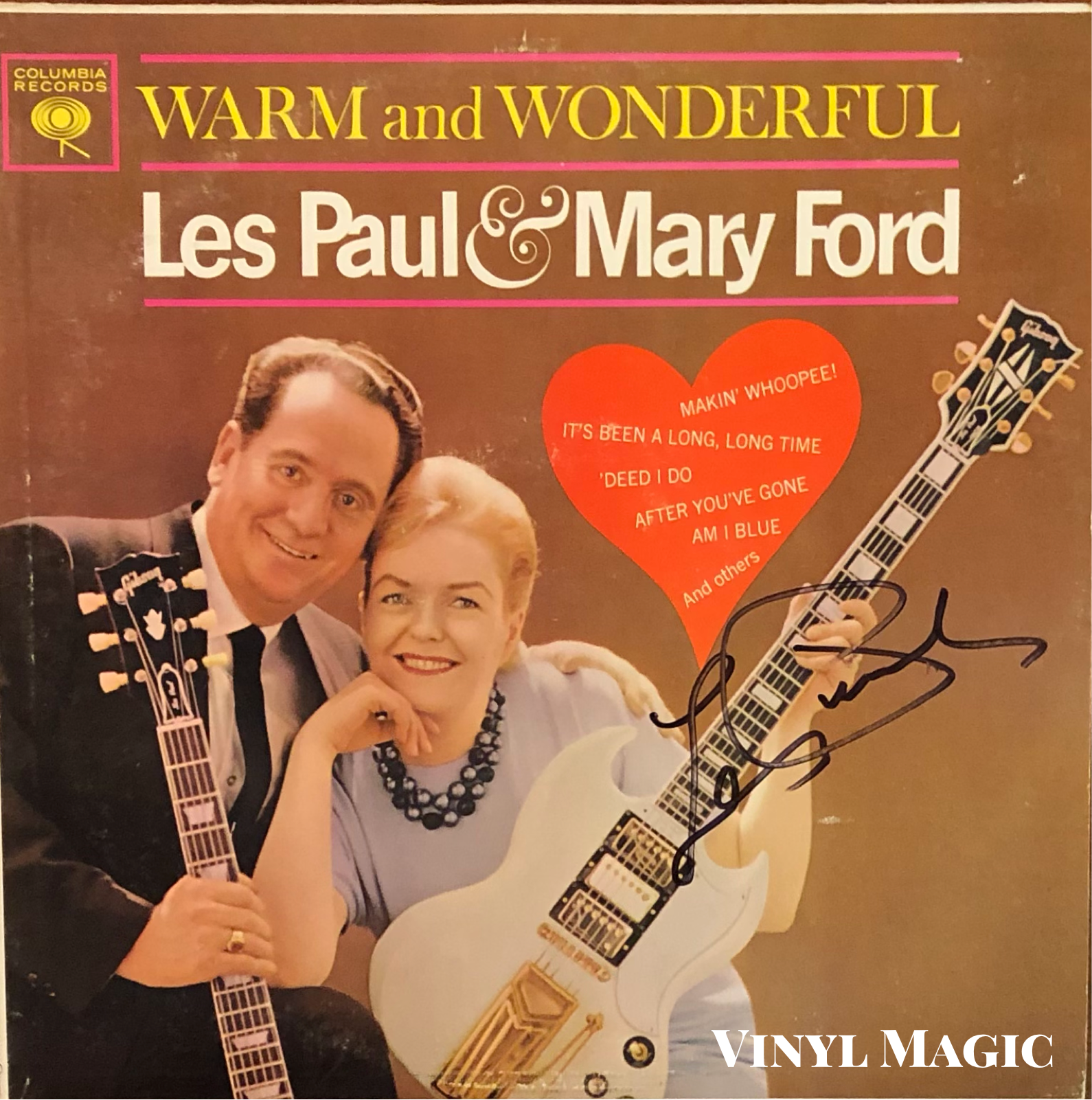Sonny Rollins, Kendall, Brendan, Camryn, Erin and Me...
I began to hang out with Sonny Rollins and his Sugar Hill Harlem crowd…anyway, Sonny had a big reputation among a lot of the younger musicians in Harlem. People loved Sonny Rollins up in Harlem and everywhere else. He was a legend, almost a god to a lot of the younger musicians. Some thought he was playing the saxophone on the level of Bird. I know one thing–he was close. He was an aggressive, innovative player who always had fresh musical ideas. I loved him back then as a player and he could also write his ass off…
Miles Davis
Saxophone Colossus (1956) signed by Sonny, Tommy Flanagan, Max Roach
It was just another record date, you know? It wasn’t one of my first dates as a leader, so it didn’t have any particular significance. Of course, I had great musicians on that record, and with great musicians the music was always paramount-trying to make it the highest quality. But other than that there was no reflection at that time about that album, or even later.
Sonny Rollins
Sonny Rollins And The Modern Jazz Quartet (1953) signed by Sonny, John Lewis, Milt Jackson, Percy Heath
When Sonny recorded “Wail” and “Dance of the Infidels” with Bud, I don’t think he was more than 17 or 18. But that’s how great he was then. I mean, he caused some guys to, you know, crash. Like, Andy Kirk Jr., a good tenor player. Sonny caused him to quit. If you didn’t have whatever it takes to keep going or forging ahead: Sonny was so great, man, that it was frightening. To all of his peers, even Bird would talk about Sonny like he was one of the cats from his era in terms of his ability.
alto saxophonist Jackie McLean
Work Time (1955) signed by Sonny, Ray Bryant, Max Roach
One very important thing I learned from Monk was his complete dedication to music. That was his reason for being alive. Nothing else mattered except music, really.
Sonny Rollins
Thelonious Monk & Sonny Rollins (1955) signed by Sonny “Kendall from Me”
When I played with Coltrane, I had the impression — and back then it was true — that I was much more popular than him. I remember what Kamasi Washington said about “Tenor Madness”: “Sonny, you weren’t even really playing.” I wasn’t really playing. Coltrane was playing. I was only playing halfway, because I thought that I was the guy and that Coltrane was this young whippersnapper. That was my mind-set. It was immature… I don’t want people to think that I’m saying, “Oh, wow, I could have played much better,” but that’s the story of “Tenor Madness.” My attitude on it wasn’t right.
Sonny Rollins
Tenor Madness (1956) signed by Sonny “Love To You All”
Well, he (Coleman Hawkins) was primarily my main idol when I first really got into him around 1939. But I'm happy to say that all of the people that I encountered, the older guys, they were all wonderful mentors for me. All these guys. J. J. Johnson, the trombone player. Oscar Pettiford, the bass player. Max Roach, the drummer. Of course, Thelonious Monk, piano. So all of these guys, they all showed me. They all mentored me. I really learned a lot from being around them.
Sonny Rollins
Rollins Plays For Bird (1956) signed by Sonny, Max Roach
I can hear music that elevates me, but on the other hand there’s martial music that’s made to make people go to war. So music is neutral. It has nothing to do with ethics. Music is not on the same level as trying to understand life. We’re here for 80-something years. One lifetime is not enough to get it right. I’ll be back in another body. I’m not interested in trying to get that technical about that because I don’t need to know. What I need to know is that being a person who understands that giving is better than getting is the proper way to live. Live your life now in a positive way. Help people if you can. Don’t hurt people. That works perfectly for me, man.
Sonny Rollins
Sonny Rollins Vol. 1 (1956) signed by Sonny, Donald Byrd, Max Roach
I was fortunate to play with great piano players in my time. However, I felt that I could concentrate on my own stream of thought better without a pianist. I just wanted to not be led — it's hard not to be led by a piano. ... In my playing, I always felt more free, to be able to go places my mind took me, without having a piano say, "Hey man, go from this chord. Go to the fourth there. Go to the seventh there." Which is good, I mean — it's nothing wrong with that. But I felt freer, just going there myself. And when I have a great bass player, like yourself, and a great drummer, that's all I need. I need the rhythm and the rest of it, I wanted to be free to hear whatever was there to be heard.
Sonny Rollins on his piano-less trio innovation
Sonny Rollins Vol. 2 (1957) signed by Sonny, J.J. Johnson, Horace Silver
Prestige was a label with an office on the west side of Manhattan run by a good guy called Bob Weinstock and his irascible father – someone who didn't care much about jazz, or the musicians. He could just as easily have been selling shoes. But jazz has always needed those little independent labels. They've often been run by fans like Weinstock, jazz enthusiasts with a bit of money from somewhere, who had the means to get their idols recorded. A lot of recordings that have stood the test of time wouldn't have happened without them.
Sonny Rollins on Prestige Records
A Night At The Village Vanguard (1957) signed by Sonny “To Brendan”
Theodore "Sonny" Rollins' career was almost derailed by drugs, and in 1950, he served ten months in Rikers Island for armed robbery. Sonny was released until he violated his parole with heroin possession in 1952 and he was sent to the Lexington Medical Center in Lexington, KY, the only federal medical facility at that time which dealt with drug addicts. Signing up for an experimental methadone program, Sonny was able to kick his heroin addiction.
Clifford Brown And Max Roach At Basin Street (1956) signed by Sonny, Max Roach
Fortunately, Sonny joined the Clifford Brown-Max Roach Quintet in 1955. Clifford Brown was a clean living trumpet player and composer who eschewed the drug addled lifestyle made popular by Charlie Parker. As Sonny said later, "Clifford was a profound influence on my personal life. He showed me that it was possible to live a good, clean life and still be a good jazz musician." They toured for a year and recorded Clifford Brown And Max Roach At Basin Street (1956) and Sonny Rollins Plus Four (1956). The quintet was well on its way to jazz dominance when Clifford and pianist Richie Powell died tragically in a car accident on a rain soaked anaconda of a two lane highway, or the Pennsylvania Turnpike.
Max Roach +4 (1956) signed by Max
Since 1956, Sonny has embarked on a solo career, and he has released more than eighty albums as a leader with some of the best jazz artists and compositions. An awe inspiring soloist, his concerts became legendary feats of sheer athleticism as notes cascaded out of Sonny's horn in torrents. His skills were partly honed during his sabbatical (1959-1961) when he would practice on the Williamsburg Bridge, near his home on the lower East Side of Manhattan, because he didn't want to disturb his neighbor, an expectant mother. So Sonny stayed on the bridge, practicing and woodshedding for almost two years. As he explained, “I am always happy to be practicing. Period. I enjoy just playing my horn and going into the type of meditation that playing involves. It puts me mentally in a place that is always transcendent and above real life. I love playing just for myself. It’s a great experience.”
Way Out West (19657) signed by Sonny “My Good Friends In Jazz”
The first time I saw Sonny was at Blues Alley in 1985 in Washington DC, a tiny venue with maybe one hundred-fifty seats. Sonny was a commanding presence and his sound was full, rich and powerful. After the show, he signed a couple of my favorite albums, including Saxophone Colossus (1956) and Way Out West (1957) which depicted Sonny in full cowboy attire in the Mojave desert. According to the album liner notes, it was Sonny's idea to celebrate his first trip out west with an outfit which included a Stetson, holster, and horn (instead of a pistol). It is an iconic shot by noted jazz photographer William Claxton. The recording session started at 3am and finished around 8am to accommodate drummer Shelly Manne and bassist Ray Brown's rigorous recording session schedules. A trio format, it was the first time Sonny played with Ray and Shelly, and they played mostly old western songs like Johnny Mercer's "I'm An Old Cowhand" and Roy Rogers' "Wagon Wheels." Sonny's genius was to transform loping, throwaway western pop into hard bop improvisatory tour de forces. They are remarkable performances.
Way Out West (1957) signed by Sonny, Ray Brown
Sonny was always kind when I met him and he was always happy to sign albums. I had read where he had stalked his hero Coleman Hawkins for autographs when he was young, so I believed we were kindred spirits. Sonny once said, "There was a great photographer named James J. Kriegsmann, who used to make these pictures of musicians, and he made a beautiful picture of Coleman. So I had my 8-by-10, and I knew where he lived, up on 153rd street, and one day I knew when he was coming home. He signed my autograph. I was 13 or 14. I was a real pest, as a young guy. It's sort of embarrassing to think about it now." Evidently, I don't suffer from the same pangs of conscience as Sonny so I remain rather shameless.
When he signed his Blue Note debut from 1957, Sonny inscribed it on the side, so I had Donald Byrd and Max Roach sign it the same way. I certainly was not going to quibble with Sonny! In some ways, this was a perfect metaphor for Sonny and his music, always laying out, taking us places we’ve never been.
The Sound Of Sonny (1957) signed by Sonny, Roy Haynes, Percy Heath
The last time I saw Sonny was at "A Benefit Concert For Clearwater", December 6, 2009 at The Tarrytown Music Hall. As my birthday present, Erin and I brought our three children, Kendall (12), Brendan (10) and Camryn (8) to see the "Saxophone Colossus." We were excited to expose our children to a legendary jazz artist whom we had seen many times over the years. The kids dressed up to meet Sonny: the girls wore their favorite dresses and Brendan wore his favorite Rolling Stones t shirt (his transition to Kanye, Kendrick and Chance was just beginning). It was a great performance and we enjoyed Sonny's (still) formidable chops. His band included his nephew, trombonist Clifton Anderson, and bassist Bob Cranshaw, an old friend and Sonny's rhythm of choice for the past fifty years. After the show, we visited with Sonny. He was particularly kind with my children and he signed and personalized an album to each of them. My favorite inscription reads, "Camryn, Stay lovely and nice to your parents!!" Words, respect, and truth from an unforgettable performer and philosopher!
Don’t Stop The Carnival (1978) signed by Sonny “Camryn Stay Lovely And Nice To Your Parents”
Sonny Rollins, a seminal jazz artist and a beautiful man, it's not many who can claim recording with Charlie Parker, Miles Davis, John Coltrane, Ornette Coleman, Thelonious Monk, and the Rolling Stones. Yes, that's Sonny's wailing (and uncredited) sax solo on Tattoo You 's "Waiting On A Friend."
Saxophone Colossus indeed.
Sonny with Brendan, Kendall,and Camryn Tarrytown Music Hall 12.06.09
Sonny with Bob Cranshaw friends for fifty+ years Tarrytown Music Hall 12.06.09
Sonny Rollins and his band Tarrytown Music Hall 12.06.09
Choice Sonny Rollins Cuts (per BKs request)
https://www.youtube.com/watch?v=UA2XIWZxMKM
“St. Thomas” Saxophone Colossus 1956
https://www.youtube.com/watch?v=3MkUvZUTFUc
“Tenor Madness” with John Coltrane 1956
https://www.youtube.com/watch?v=b6BAN0zM0X4
“Alfie’s Theme” Alfie 1965
https://www.youtube.com/watch?v=0nDCHEhabrs
“Don’t Stop The Carnival” live 1975
https://www.youtube.com/watch?v=nlatJOsLhPA
“I’m An Old Cow Hand” Way Out West 1957
https://www.youtube.com/watch?v=58zINMduvt0
“I’ve Got You Under My Skin” A Night At The Village Vanguard 1957
https://www.youtube.com/watch?v=IuZ8CYg0hKM
“Moritat” (Mack The Knife) Saxophone Colossus 1956
https://www.youtube.com/watch?v=7hP3snBSzYU
“Without A Song” The Bridge 1962
https://www.youtube.com/watch?v=BVjakWUFY7g
“The Way You Look Tonight” with Thelonious Monk 1954
https://www.youtube.com/watch?v=Pse9wHphsPI
“Oleo” Trio In Stockholm 1959
https://www.youtube.com/watch?v=gS0IjqOt-E8
“Why Don’t I” Volume 2. 1957
https://www.youtube.com/watch?v=6TDS-s-GQ4I
“Love Letters” live in Sweden 1959
Bonus Pick:
https://www.youtube.com/watch?v=eYSTlwf2_XM
“Waiting On A Friend” The Rolling Stones with an uncredited Sonny Rollins
Sonny Rollins wailing at Tarrytown Music Hall 12.06.09
Sonny Rollins and his nephew Clifton Anderson Tarrytown Music Hall 12.06.09

